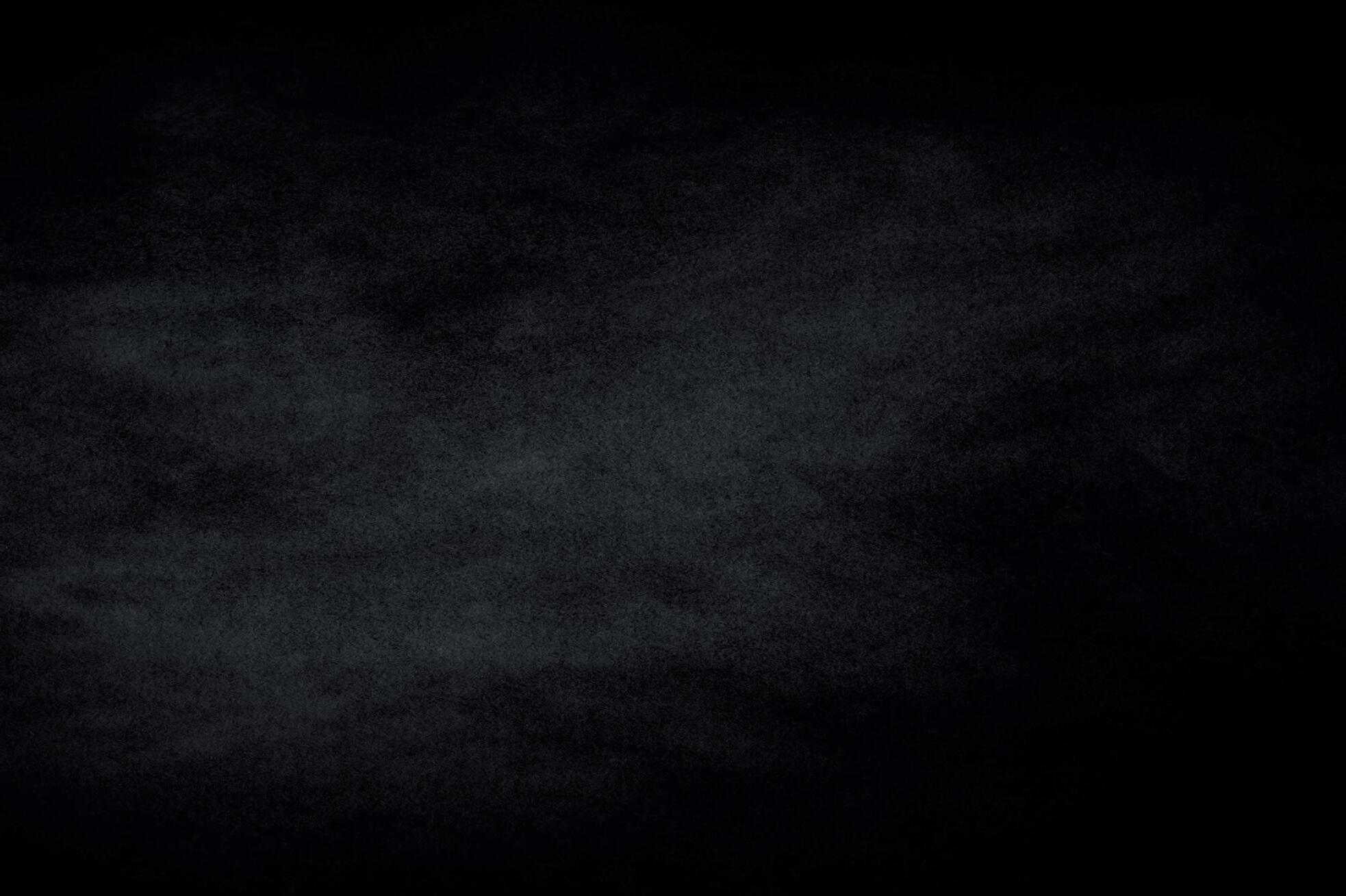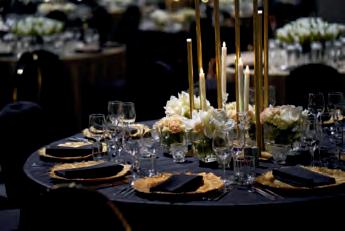with Kentucky Explorer


with Kentucky Explorer

Writer John Mitchell Johnson fondly recalls a formidable figure from his childhood
The Heinous Harpe Brothers Kentucky Mountain Workshops Spooky Sites in the Commonwealth
The Potential for Maple Syrup Production in Kentucky

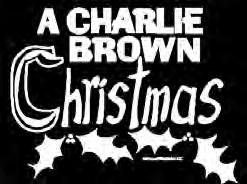


14 In Their Own Words The Mountain Workshops help young photojournalists hone their craft while giving “ordinary” people a platform to tell their stories
20 Mindless Mayhem The notorious Harpe Brothers embarked on a bloody odyssey primarily in frontier Kentucky
24 Spooky Sites With the scary season approaching, it’s a great time to tour these creepy locales and attend haunted happenings across Kentucky
30 Look Out, Vermont Kentucky’s maple syrup industry has untapped potential

33 Kentucky Book Festival The Kentucky Humanities presents the 44th edition of the event at JosephBeth Booksellers in Lexington
Test your knowledge of our beloved Commonwealth. To find out how you fared, see page 5.
1. Which tavern in Northern Kentucky is thought to house “spirits” aside from those of the wine, beer and bourbon varieties?
A. Mansion Hill Tavern in Newport
B. Blinkers Tavern in Covington
C. Three Spirits Tavern in Bellevue
2. The spirit of J. Graham Brown is said to linger frequently on the mezzanine of which Louisville hotel?
A. The Galt House
B. The Seelbach Hilton
C. The Brown Hotel
3. With a variety of ghostly activity— including footsteps, whispers and spectral sightings—which Western Kentucky University building is thought to be haunted by the spirit of a man who fell through a skylight in the early 1900s?
A. Van Meter Hall
B. Potter Hall
C. Ivan Wilson Fine Arts Center
4. Two Louisville Police pilots, responding by helicopter to a possible break-in, encountered what object flying in the night sky in February 1993?
A. A thunderbird
B. A UFO (now known as a UAP)
C. A flock of seagulls
5. Though not known as haunted, the life-sized statues of 15 members of the Wooldridge family at which cemetery was considered creepy enough to be listed on the Kentucky After Dark passport program?
A. Riverside Cemetery, Hopkinsville
B. Eastern Cemetery, Louisville
C. Maplewood Cemetery, Mayfield
6. Paranormal activity has been reported in several areas of Louisville’s Cave Hill Cemetery, including around the graves of Mildred Jane Hill and Patty Smith Hill, the two women who wrote what popular tune?
A. “My Old Kentucky Home”
B. “Happy Birthday”
C. “Blue Moon of Kentucky”
7. What lake in Central Kentucky is said to be the home of a creature nicknamed the “Eel-Pig?”
A. Herrington Lake
B. Taylorsville Lake
C. Lake Linville
8. According to the Bigfoot Field Researchers Organization, people in approximately how many Kentucky counties have reported sightings of Bigfoot, a creature typically said to be more than 7 feet tall and covered in fur?
A. 0
B. 20
C. 50
9. Whose spirit is alleged to most frequently haunt the Pikeville Cemetery in Pikeville?
A. Octavia Hatcher, who was buried alive accidentally and then suffocated in the grave
B. William Howard, a Confederate soldier
C. Devil Anse Hatfield
10. What state correctional facility is said to be one of the most haunted locations in Kentucky?
A. Kentucky State Penitentiary, Lyon County
B. Old Jailers Inn, Nelson County
C. Eastern Kentucky Correctional Complex, Morgan County
Contributed by Dr. Tamela Williams Smith, CEO & Founder of Dr. Smith’s Spooky Stories, LLC.

© 2025, VESTED INTEREST PUBLICATIONS
VOLUME TWENTY-EIGHT, ISSUE 8, OCTOBER 2025
Stephen M. Vest Publisher + Editor-in-Chief
Patricia Ranft Associate Editor
Rebecca Redding Creative Director
Deborah Kohl Kremer Assistant Editor
Ted Sloan Contributing Editor
Cait A. Smith Copy Editor
SENIOR KENTRIBUTORS
Jackie Hollenkamp Bentley, Jack Brammer, Bill Ellis, Steve Flairty, Gary Garth, Kim Kobersmith, Brigitte Prather, Walt Reichert, Tracey Teo, Janine Washle and Gary P. West
BUSINESS AND CIRCULATION
Barbara Kay Vest Business Manager
Katherine King Circulation Assistant
Lindsey Collins Senior Account Executive and Coordinator
Kelley Burchell Account Executive
Laura Ray Account Executive
Teresa Revlett Account Executive For advertising information, call 888.329.0053 or 502.227.0053
KENTUCKY MONTHLY (ISSN 1542-0507) is published 10 times per year (monthly with combined December/January and June/ July issues) for $25 per year by Vested Interest Publications, Inc., 100 Consumer Lane, Frankfort, KY 40601. Periodicals Postage Paid at Frankfort, KY and at additional mailing offices.
POSTMASTER: Send address changes to KENTUCKY MONTHLY, P.O. Box 559, Frankfort, KY 40602-0559. Vested Interest Publications: Stephen M. Vest, president; Patricia Ranft, vice president; Barbara Kay Vest, secretary/ treasurer. Board of directors: James W. Adams Jr., Dr. Gene Burch, Gregory N. Carnes, Barbara and Pete Chiericozzi, Kellee Dicks, Maj. Jack E. Dixon, Mary and Michael Embry, Judy M. Harris, Jan and John Higginbotham, Frank Martin, Bill Noel, Walter B. Norris, Kasia Pater, Dr. Mary Jo Ratliff, Randy and Rebecca Sandell, Kendall Carr Shelton and Ted M. Sloan.
Kentucky Monthly invites queries but accepts no responsibility for unsolicited material; submissions will not be returned.
KENTUCKYMONTHLY.COM


I enjoyed the April issue’s article on baseball in Kentucky (page 36) but was disappointed that there was no mention of the semi-pro mountain baseball leagues of the 1940s. Until 1951, 22 semipro baseball clubs graced the Big Sandy Valley, many sponsored by coal companies.
In 1949, more than 120,000 attended the clubs’ games. For the four state tournaments played in Pikeville and Elkhorn City, attendance was more than 100,000. Unfortunately,
the disappearance of the prosperity of the war years ended these clubs.
Below is a photo of the Elkhorn City Club, the 1948 winners of the State Semi-Pro Title and one of six teams in the Elkhorn League, which included Wheelwright, Drift, Weeksbury, Wayland and Pikeville.
Pat Caudill Cole, Elkhorn City
Thanks to Bill Ellis for his article on old farms (August issue, page 58). It reminded me of my
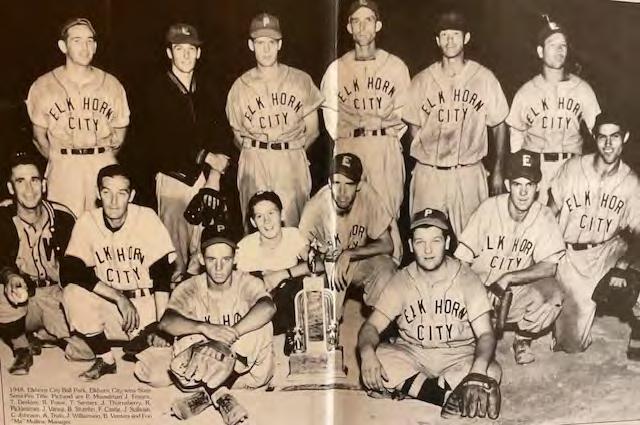

grandparents farm that we visited when we were young.
Donna Bresser, Edgewood
I enjoy your magazine, especially Bill Ellis. I am from Shelbyville and fondly recall the way of life he writes about.
Please check out the articles on online about my son-in-law, Cole Stamper (of Wheatley, Owen County), as he [and his brother, Forest] won the SPEC MIX Bricklayer 500 World Championship twice. They laid 730 bricks in an hour to claim the title “World’s Best Bricklayer.”
Cole supervised and laid the stone at Keeneland and recently got back from winning the Super Trowel brick competition in England.
Teresa Biagi, Worthville (Carroll County)
We Love to Hear from You! Kentucky Monthly welcomes letters from all readers. Email us your comments at editor@kentuckymonthly.com, send a letter through our website at kentuckymonthly.com, or message us on Facebook. Letters may be edited for clarification and brevity.


Even when you’re far away, you can take the spirit of your Kentucky home with you. And when you do, we want to see it!


Marsha Nauman, left, and her mother, Nadine Brown—both of Bowling Green—visited and took in the majestic views of Wyoming’s Grand Teton National Park.
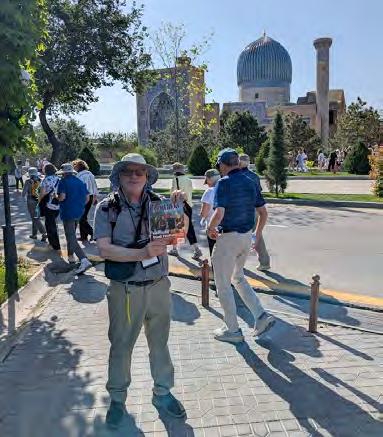
Isaac Joyner of Lexington traveled to Uzbekistan, where he is pictured in Samarkand, one of the stunning cities on the historical Silk Road.
Ginny and Brad Logan of Harrodsburg took a little piece of Kentucky on their trip to The Big Apple. They are pictured in Times Square.
submit your photo
Take a copy of the magazine with you and get snapping! Send your high-resolution photos (usually 1 MB or higher) to editor@kentuckymonthly.com or visit kentuckymonthly. com to submit your photo.
KWIZ ANSWER: 1. C. The three spirits are thought to be members of the Funken family, who built the Bellevue house and lived there in the 1880s; 2. C. The Brown Hotel was built by J. Graham Brown in 1923, and apparently, he is still watching over it; 3. A. Legend has it that a worker was killed during construction, but the death actually was that of a student from another school who fell in 1918 while looking for an airplane; 4. B. The two experienced pilots observed a UFO that fired three fireballs at their helicopter. No one was harmed. Louisville Police officers on the ground also observed the object; 5. C. Nicknamed “The Strange Procession That Never Moves,” the statues were commissioned by Col. Henry G. Wooldridge to honor his family; 6. B. “Happy Birthday” was written by the Hill sisters in 1893; 7. A. Reports of the Herrington Lake monster have existed since the lake was created in 1925, with the best-known sighting occurring in 1972 by a University of Kentucky professor; 8. C. Bigfoot reporting organizations list varying numbers, but at least 50 Kentucky counties have reported activity; 9. A. Hatcher fell into a coma and was believed dead. After others became ill in a similar manner, she was exhumed, and her coffin showed scratching and tearing on the inside lining, indicating that she had awakened in the grave; 10. A. Completed in 1886, the prison houses maximumsecurity and death-row inmates. With the number of deaths there, including murders and suicides, it is not surprising prisoners and staff have reported ghostly activity.
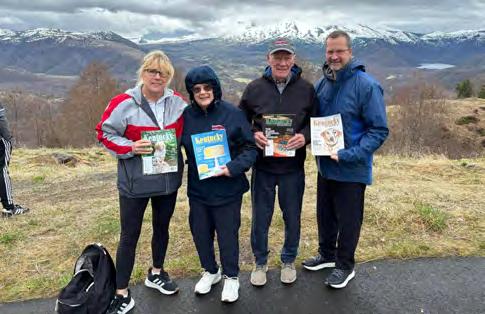
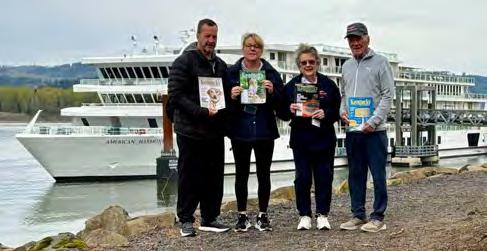
Bob and Martina Durrett of Crestview Hills and their daughter and son-in-law, Sue and Andy Weibel, of Fort Mitchell enjoyed an American Cruise Line river cruise of the Columbia River Gorge.

When funding for public radio was severely cut last summer, Daniel Martin Moore and other Kentucky musicians stepped in to help. Moore is a musician, singer, songwriter and producer originally from Cold Spring in Campbell County.
A federal bill was signed into law that cut approximately $1.1 billion of funding for the Corporation for Public Broadcasting (CPB), which supports local public radio and public television stations. Some stations are predicted to close due to lack of funding.
Louisville Public Media (LPM) has three radio stations—WFPK, WUOL and WFPL—and after the bill passed, LPM faced a $376,000 deficit. Knowing how damaging that would be to the stations, Moore asked musician friends to contribute songs to a collection that public radio stations across the state can use as membership incentives. The only requirement to get the download of the songs is to be a current or new member of a Kentucky public radio station.
“I think we all recognize how important it is to have media that comes from our communities,” he said.
“Congress rescinded funding for the Corporation for Public Broadcasting on Friday, July 18, around 1 a.m.,” said Kelly Wilkinson, membership director for LPM. “We went on air with an emergency fundraising campaign that same morning at 6 a.m. Donations flooded in over the next 36 hours.
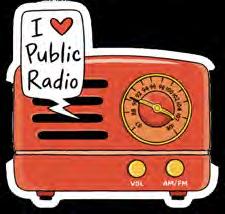
“The immediate need for us was $376,000 … We hit that goal on Saturday morning, July 19. We stopped asking for donations on-air on Saturday around noon, when the tally was just above $400,000. Over the next week or so, people continued to donate. The final total raised was around $500,000.”
“When Laura Shine [senior host and producer at WFPK] needs something, we’re there,” Moore said.
“Everyone I contacted wanted to help,” Moore said. He said Ben Sollee, Joan Shelley, Jim James and the members of My Morning Jacket agreed right away.
“Almost everything here has never been heard before,” Moore said of the collection.
Artists of all ages and genres are represented. The only requirement to be included was that the musicians had to be from Kentucky or built their careers in Kentucky. Moore said My Morning Jacket contributed a cover of a Bob Marley song. Jecorey Arthur did a spiritual, while Teddy Abrams, the director of the Louisville Orchestra, contributed an original piano piece.
Moore said the musicians wanted to help because of their love of public radio. He talked about WFPK, the independent music station at LPM, and its relation to local musicians. “They have supported us to an incredible degree over the years,” he said. “We deeply appreciate that.”
While the idea originated with a Louisville musician, the project is available to any public radio station in the state that would like to use the music collection for their membership drives. Moore pointed out that public radio stations in smaller communities cover music, local and national news and even weather alerts for their community.
“It was so moving. I’ve been the local music liaison for over a decade, making sure we support our musicians,” Shine said. “I rarely ask for anything from them. It truly felt like an unsolicited gift to us all, and I’m feeling tears swell up right now as I’m thinking about it.”
It almost felt like the last scene of the Christmas film classic It’s a Wonderful Life. Not exactly, according to Moore. “Mr. Potter’s still out there,” he said. “He’s not done.”
Shine said that the day Congress rescinded funding was important to her. “I’ve never felt the support as much as I did that day. What started out as the worst day in public radio turned into the best day, ever,” she said. “When Daniel gathered all of those musicians to pledge their support to not just us but to all of the public radio stations in Kentucky, it blew my mind.”
Moore said that 26 tracks have been gathered, are being engineered by Kevin Ratterman, and should be ready for downloads by press time.
Moore also said he headed the project because he’s “just trying to resist the slow creep of cynicism.” Moore toured with British musician Billy Bragg throughout the United Kingdom several years ago, and Bragg believes in being positive and doing good.
Bragg’s outlook rubbed off on Moore, who is following Bragg’s advice of “trying to stay focused on what you want to achieve and not just throw up your hands. Keep your spirit alive.”






In her new book, The Modern Mountain Cookbook, Eastern Kentucky native Jan A. Brandenburg takes beloved recipes from her childhood and substitutes ingredients to conform to her vegan lifestyle. Following years of trial and error, she presents these timeless Appalachian classics with a health-conscious, plant-based twist to be enjoyed by vegans and carnivores alike.
SERVES 8-10
1 7-ounce block vegan cheddar, cut into a medium dice
8 ounces vegan cream cheese
1 tablespoon minced garlic
1 tablespoon hot sauce (I use the Kentucky-based Screamin’ Mimi’s Pepper Sauce)
1 teaspoon vegan Worcestershire sauce
½ cup flat IPA
¼ teaspoon cayenne
1. Allow the cheese to come to room temperature. Place all the ingredients in a food processor or high-speed blender (the soup speed works well) and process until completely smooth.
2. Pour into a container, cover with plastic wrap, and press the wrap onto the top of the mixture.
3. Refrigerate overnight or for several hours prior to serving.

Recipes and images courtesy of Jan A. Brandenburg’s The Modern Mountain Cookbook: A Plant-Based Celebration of Appalachia, © 2025 The University Press of Kentucky. Used by permission.

MAKES 24 LARGE OR 36 SMALL COOKIES
¾ cup sugar
¾ cup brown sugar
1 cup vegan butter, softened
1 tablespoon vanilla extract
1/3 cup applesauce
1 tablespoon vegan egg replacer powder
2¼ cups unbleached all-purpose flour
1 teaspoon baking soda
1 teaspoon salt
1 12-ounce bag vegan semisweet chocolate chips
½ cup old-fashioned rolled oats
½ cup chopped pecans or walnuts (optional)
Flaky sea salt for garnish (optional)
1. Preheat oven to 350 degrees. Line a baking sheet with parchment paper and set aside.
2. With an electric mixer, cream together both sugars and the vegan butter. Add the vanilla, applesauce and vegan egg replacer. Beat at medium-high speed until fluffy and creamy, 2-3 minutes.
3. Sift together the flour, baking soda and salt and add to the butter mixture. Mix at low speed until fully incorporated.
4. Fold in the chocolate chips, oats and nuts. Drop by rounded tablespoons onto the baking sheet.
5. Bake for 12-15 minutes or until golden brown. Cool on a wire rack. Garnish with flaky sea salt if desired.
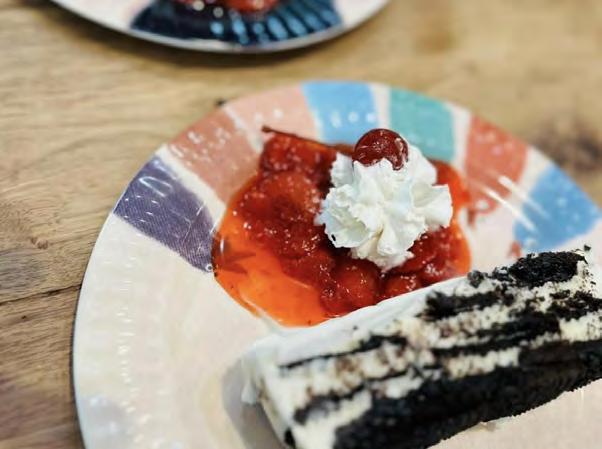
2 pints vegan sour cream
1 cup powdered sugar
1½ teaspoons vanilla extract
1/8 teaspoon salt
42 vegan chocolate wafers
1 pound strawberries, rinsed, hulled and sliced
1/3 cup granulated sugar
1 tablespoon fresh lemon juice
1. Line a 9- by 5-inch loaf pan with plastic wrap. Place one sheet vertically and one horizontally, leaving a few inches hanging over the sides.
2. In a medium bowl, whisk together the vegan sour cream, powdered sugar, vanilla and salt until smooth.
3. Arrange a layer of wafers on the bottom of the pan, keeping the layer as level as possible. Spread with 1 cup of the sour cream mixture. Repeat with 2 more layers of wafers and sour cream, ending with the sour cream mixture.
4. Cover with plastic wrap and refrigerate at least 12 hours.
5. In a medium saucepan, combine the strawberries, granulated sugar and lemon juice. Bring the mixture to a boil, stirring frequently. Reduce heat and simmer 20-25 minutes, stirring occasionally, until the sauce thickens. Remove from heat and cool to room temperature before refrigerating.
6. To serve, carefully lift the chilled icebox cake from the pan using the overhanging plastic wrap. Flip the cake onto a cutting board with the wafer side up and gently peel away the wrap. Spoon a couple tablespoons of strawberry sauce on each serving plate. Using a sharp serrated knife, slice the cake into 10 portions. Arrange the slices on the serving plates and top with additional strawberry sauce if desired.

SERVES 8
½ stick vegan butter
2 cups chopped celery
1 onion, chopped
3 tablespoons chopped green pepper
1 14.5-ounce can stewed tomatoes, puréed
2 cups fresh corn
1 teaspoon sea salt
¼ teaspoon freshly ground black pepper
¼ teaspoon paprika
½ cup whole cashews
½ cup filtered water
1½ cups vegetable broth
½ cup shredded vegan cheddar
3 tablespoons unbleached all-purpose flour
½ cup chopped pimento
1. Melt the vegan butter in a large pot over medium heat. Add the celery, onion and green pepper and sauté for 10 minutes or until onion is translucent.
2. Stir in the puréed tomatoes, corn, salt, pepper and paprika. Simmer 30 minutes. Remove from the heat and set aside.
3. In a high-speed blender, combine the cashews, filtered water and vegetable broth. Blend at high speed for 1-2 minutes or until smooth. Add the shredded cheddar and blend an additional 1 minute. Add the flour and blend for 1-2 minutes until smooth and creamy.
4. Stir the cheese mixture into the soup, along with the pimento. Return to the heat and stir until the soup is heated through and thick. Serve immediately.
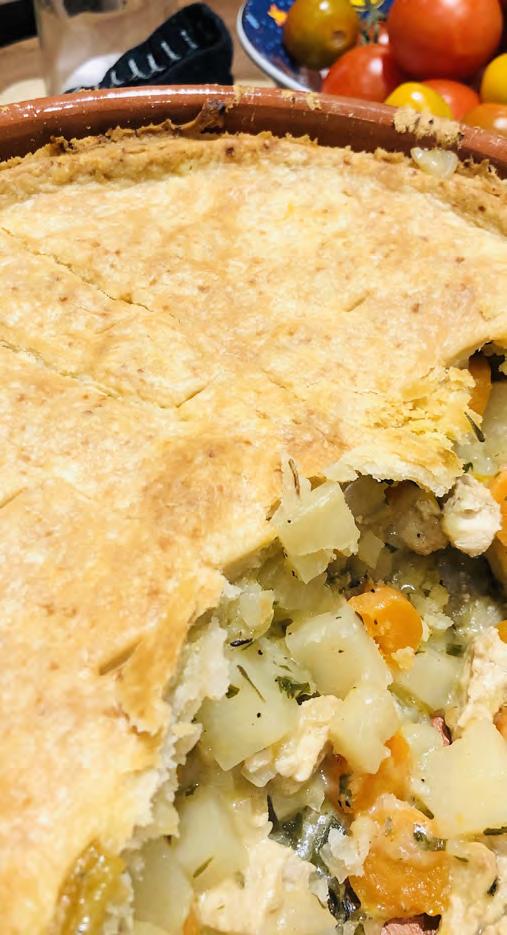
1. Preheat oven to 400 degrees. Toss chick’n with 1 tablespoon olive oil and bake on nonstick aluminum foil for 20 minutes. Set aside to cool, then chop into cubes.
2. To make the crust, place the flour, sugar and salt in the bowl of a food processor and pulse to combine. Cut the vegan butter into small pieces and add to the bowl. Pulse about 10 times, or until the mixture looks like coarse meal.
3. Slowly drizzle the water into the mixture while pulsing until the dough holds together when pressed between two fingers. Shape into a large disc, wrap in wax paper, and refrigerate at least 1 hour.
4. While dough is chilling, heat 3 tablespoons olive oil in a large saucepan over medium heat. Add the shallots and cook 4-5 minutes. Add the carrots, potatoes and peas, and stir to combine. Continue to cook for another 10 minutes,
Chick’n
10 ounces nonbreaded chick’n (a plant-based chicken alternative)
1 tablespoon olive oil
Crust
2½ cups unbleached all-purpose flour
1 teaspoon sugar
1 teaspoon salt
2 sticks (1 cup) vegan butter
¼-½ cup ice water
Filling
3 tablespoons olive oil
2 small shallots, finely chopped
3 carrots, thinly sliced on the bias
2 large potatoes, cubed
½ cup fresh or frozen peas
½ cup dry white wine or white cooking wine
2 cups no-chicken broth
1 teaspoon dried thyme
5 teaspoons cornstarch whisked with 2 tablespoons cold water
¾ cup vegan half-and-half
½ teaspoon salt
½ teaspoon freshly ground black pepper
2 tablespoons finely chopped fresh parsley
until the vegetables begin to soften.
5. Stir in the wine and simmer until the liquid is reduced by half. Add the broth, thyme and browned chick’n and cook another 4 minutes.
6. Add the cornstarch mixture and vegan half-and-half. Cook an additional 5 minutes, stirring occasionally, until the mixture is thick and bubbly. Stir in the salt, pepper and parsley and pour into a casserole dish.
7. Place the chilled dough on floured wax paper and roll into a rectangle. Place dough on top of the casserole to cover completely and use a sharp knife to trim the edges. Pierce the crust with a fork 10-15 times. Bake on the middle rack of the oven for 40 minutes or until the crust is golden brown and the mixture is bubbly. Serve hot.
Meet author Jan A. Brandenburg and purchase a copy of The Modern Mountain Cookbook:
A Plant-Based Celebration of Appalachia at the Kentucky Book Festival on Nov. 1 at Joseph-Beth Booksellers in Lexington. For more on the Book Festival, see page 33.
The Mountain Workshops help young photojournalists hone their craft while giving “ordinary” people a platform to tell their stories
BY TOM EBLEN
On the third Saturday in October, a rented truck will pull up to the Cox Building in downtown Maysville, where Western Kentucky University students will unload dozens of computers and connect them with thousands of feet of ethernet and fiber networking cable. Tables, chairs and a big screen will be set up, and the historic convention center will be transformed into a temporary workspace—part classroom, part newsroom.
The 50th annual Mountain Workshops will be ready to roll in Mason County.
The workshops started in 1976 as a WKU class project to photograph the last one-room schoolhouses in Kentucky’s mountains. In the halfcentury since, it has become a nationally renowned seminar that trains visual storytellers by having them capture life in a community for a week. To date, the workshops have documented 40 Kentucky counties and five in Tennessee through pictures, words and—since 2007—short films.
“It started out as something we did for our students, but I don’t think we anticipated just how much impact we would have on the industry and the communities we
covered,” said James Kenney, who heads WKU’s visual journalism and photography program and has been the workshop’s director since 2000. “In the process, we have built a halfcentury history of life in Kentucky.”
On Oct. 21, about 70 student and professional photographers from across the country will gather in the transformed Cox Building. They will spend the next four days and nights learning skills from an all-volunteer
Opposite page, Allan “Casey” R. Read takes a nap after spending the day walking around Scottsville, 1986.

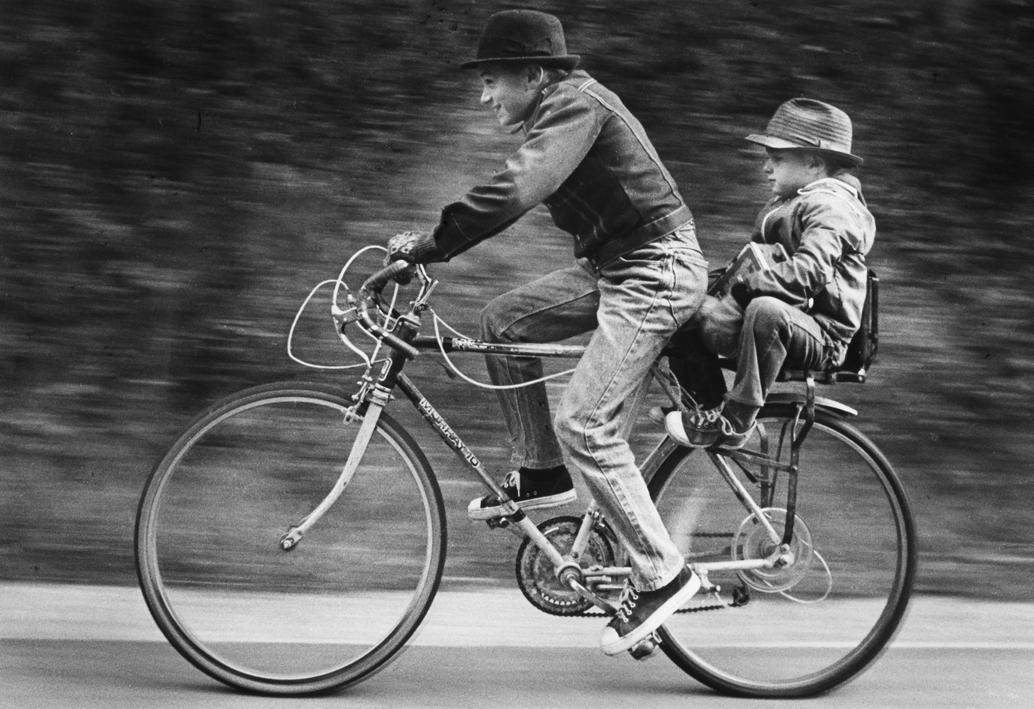
staff of 40 professionals that include Pulitzer Prize-winning photographers, Emmy Awardwinning filmmakers and Hall of Fame journalists.
“I’m in awe of it every year,” Kenney said. “I can’t believe what people in the industry give to the workshops because they believe in [them] so much.”
Recruiting world-class instructors has never been hard, said Tim Broekema, a WKU professor who oversees the video workshop. “I coldcall filmmakers who are Oscarnominated and have absolutely nothing to do with Western, and they immediately say, ‘I’ve been wanting to come to Mountain forever!’ ” he said.
The workshops begin at noon on Tuesday, when participants rush to pull a folded slip of paper from a hat during the chaotic opening ceremony. Each slip contains the name and phone number of a local person who has agreed to be a story subject: teachers, merchants, barbers, pastors, farmers, restaurant servers, veterinarians—seemingly ordinary people. But workshop lesson No. 1 is that seemingly ordinary people have fascinating stories if you take the time and effort to discover them.
The participants immediately call their subjects and head out to meet them. Over the next few days, they will become the subjects’ shadows, following them to work, play, meals and family moments big and small.
By the time the workshop ends in the wee hours of the following Sunday morning, video participants, with help from their coaches, will have made short films about their subjects. Photographers, working with both photo and writing coaches, will have told their subjects’ stories in 10 images and a written essay. All of this will be posted online at mountainworkshops.org
Professional filmmakers who are workshop alumni will have created a stunning documentary about Mason County using digital video they shot, as well as clips and images from participants. And a team of photo-editing students and coaches will have sorted through thousands of images to begin
assembling a 124-page book.
While some participants are WKU students, the Mountain Workshops’ fame has attracted students and working professionals from across the United States and as far away as Australia and Denmark. The event has helped make WKU’s photojournalism program one of the nation’s most respected.
WKU’s photojournalism majors are encouraged to begin attending the workshop as freshmen “labbies,” a title that recalls the pre-digital days, when their main job was processing and printing participants’ black-and-white film. Now, the labbies do most of the grunt work— from running errands to setting up all those computers and cables under the direction of a former newspaper photographer who runs an IT company.
“They get back [to campus], and they’re just on fire,” Kenney said of the labbies, who usually return the next year as participants. “They’ve seen what it’s all about.”
Award-winning photojournalists have found their callings at the Mountain Workshops. One is Jonathan Newton, who retired last year after a 24-year career as a staff photographer at the Washington Post and previous stints at newspapers in Tampa, Atlanta and Nashville.
In the spring of 1983, Newton was an unfocused WKU freshman from Louisville. Mike Morse and Jack Corn, two of the photojournalism program’s founding fathers, pulled him aside and told him he should consider another major. “They said I just wasn’t cutting it,” Newton said. “In hindsight, they were exactly right.”
After thinking it over all summer, Newton decided to give
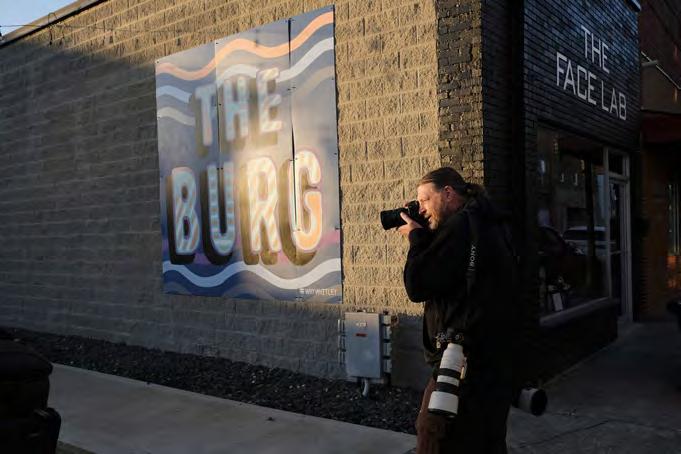
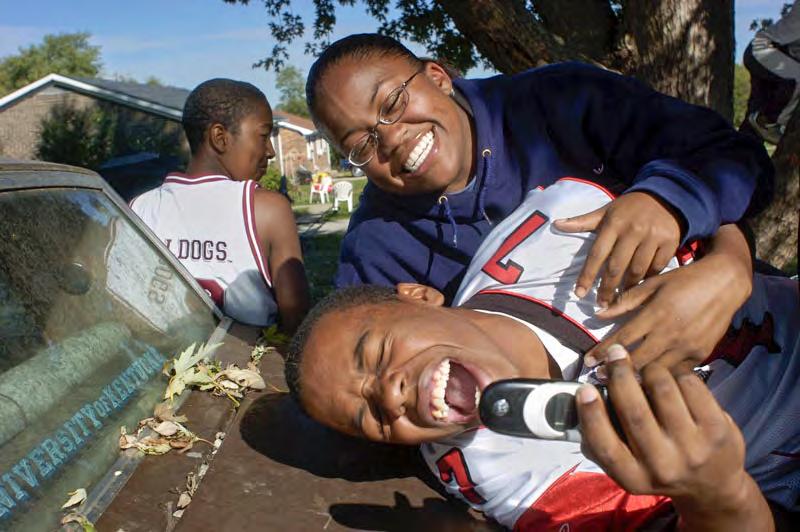


director at the Washington Post. A year later, Elbert hired him.
Leslye Davis found her calling at the workshop a generation later. A Greensburg native, she is now a New York-based filmmaker and writer. As a videographer for The New York Times, she co-produced Father Soldier Son, an award-winning Netflix documentary, in 2020.
“I feel like the Mountain Workshops was one of the luckiest things that ever happened to me,” Davis said. While working with video coach Liz O. Baylen, now a senior audio editor at The New York Times , Davis was inspired to become a documentary filmmaker. “I saw the power of audio and video and letting people tell their own stories,” she said.
Davis has volunteered several years as a video coach. She would be in Maysville this year were she not studying at the Massachusetts Institute of Technology on a prestigious Knight Fellowship.
photojournalism another shot. He came back to Western, attended the workshop in Celina, Tennessee, and drew a great story subject: Bud Garrett, a blues singer who handcrafted flint marbles—then a popular men’s sport in that town of 1,500 people. Newton also received encouragement from his photo coach, Tom Hardin, then photo director at
The Courier-Journal in Louisville.
“It all came together for me at the workshop—I learned how to shoot,” Newton said. “Tom Hardin gave me a ‘lightbulb award’ because he said he saw a light went on in my brain.”
Newton returned for many years after that as a volunteer. At the 1999 workshops in Muhlenberg County, he met coach Joe Elbert, then photo
Communities are changed by the workshops, too. That’s because the process of being story subjects, seeing themselves in photos and videos, or just seeing photojournalists all over town reminds people that their little towns are special.
“We didn’t know what to expect, but it was wonderful,” said Roddy Harrison, the mayor of Williamsburg, site of the 2024 workshops. “It brought the town to life, and it made everybody feel good … It gave them a voice. Any city that gets the opportunity would be crazy not to do this.”

Even with an all-volunteer staff, it costs a lot of money to put on the workshops. Budget cuts have eliminated most university funding. Many participants now pay their own way rather than being sponsored by an employer. As newspapers and magazines shut down or reduce staff, more photographers are becoming freelancers.
Host communities and corporate sponsors provide valuable financial and in-kind support, but organizers have started fundraising for an endowment to keep the workshop going for another half-century.
“The Mountain has always held on to a strong ethical approach,” Broekema said. “In an industry that is constantly under attack for its ethics, that’s still our guiding mandate … to teach young journalists the ethical process of gathering content and telling stories.” Q
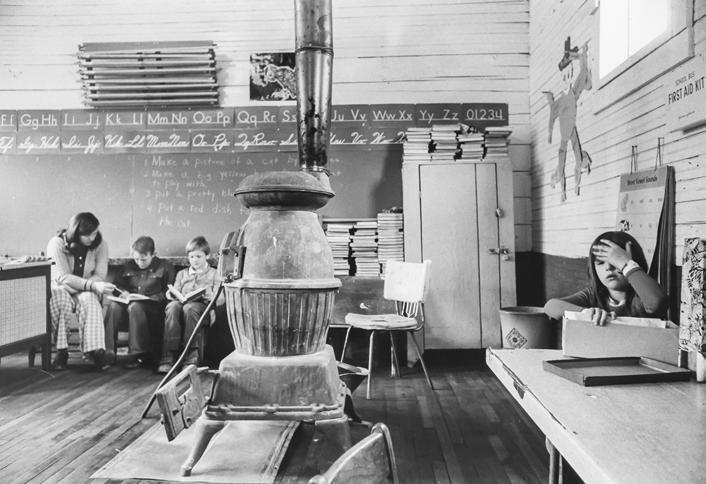
For more information on the Mountain Workshops and to contribute to help them continue, visit mountainworkshops.org.
The notorious Harpe Brothers embarked on a bloody odyssey primarily in frontier Kentucky
BY RON SOODALTER
On a brisk day in December 1787, a wellappointed young man named Thomas Langford was breakfasting at an inn near the small settlement of Crab Orchard in Lincoln County when a ragged group of two men and three women appeared. Feeling sorry for the small band, Langford generously bought them breakfast, unwittingly showing a purse of silver coins. Bandits were common on the Wilderness Road, and when the time came to continue his journey, he joined them, for security.
It was the worst decision Langford ever made and his last. Unbeknownst to him, the two men were the notorious Harpe Brothers, and they had come to the inn after robbing and brutally murdering several travelers. Two days after Langford left the inn, two drovers found his body covered with leaves and hidden behind a log.
For years during the late 18th century, the Harpe Brothers ranged unimpeded throughout Kentucky and frontier regions from pre-state Illinois to Louisiana. Notorious as highwaymen and river pirates, they were
most specifically feared as wanton, indiscriminate murderers of men, women and children. So widespread and vicious were their depredations that historians have referred to them as America’s first serial killers.
According to most reliable sources, Micajah “Big” Harpe and Wiley “Little” Harpe were not brothers, but rather first cousins and the sons of Scottish immigrants. Big Harpe was born Joshua Harper, probably in the 1750s; Little Harpe was named William Harper and was about two years younger than his cousin. Arrest warrants and reward notices of the time include fairly detailed physical descriptions of the two, with Big Harpe depicted as a hulking 6-footer “of robust make” with wiry black hair, while Little Harpe was redheaded and, as the moniker suggests, considerably smaller than his cousin but no less psychopathic.
The two had sided with the British during the Revolutionary War and had purportedly fought against the Patriots alongside other Tories at the battles of Cowpens and King’s Mountain. For years after the British
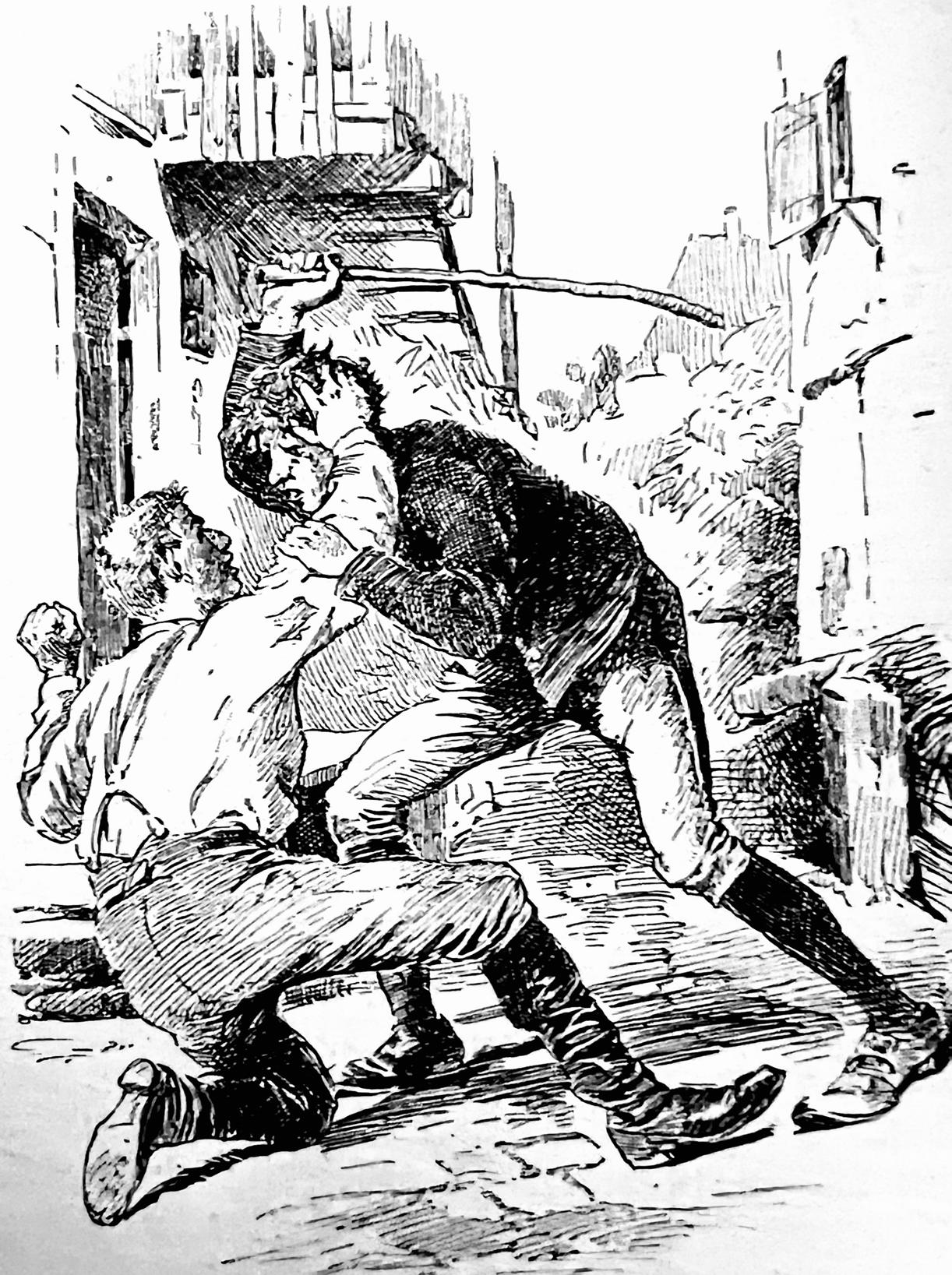
surrendered, the two continued to raid Patriot homesteads, farms and settlements as members of Dragging Canoe’s renegade Chickamauga Cherokee raiding parties.
By this time, the Harpes had kidnapped two young women, both of whom Big Harpe claimed as his “wives.” In a short while, Little Harpe took a woman of his own, and the cousins freely shared their “brides” with each other. Three children were born out of this arrangement, one of whom Big Harpe killed simply for crying while he was trying to sleep. The women accompanied the Harpes on their murderous forays despite the brutal treatment that the men meted out.
There is no accurate account of the number of murders the Harpes committed. Estimates have ranged between 50 and 100. They first achieved notoriety when mangled bodies began to turn up in the wilds. The Harpes’ trademark manner of disposing of their victims was to eviscerate them, fill the body cavities with rocks, and sink them in the nearest stream or river. Since they made no secret of their depredations—often announcing, “We are the Harpes!”—their name spread rapidly through the tiny communities and lone farms on the frontier.
The people who chose to make their way in the wilderness were, of necessity, a hardy lot. Living lives that were, in the words of English philosopher Thomas Hobbes, “solitary, poor, nasty, brutish and short,” they were accustomed to death in its many forms: disease, fire, freezing, starvation, childbirth loss, and attack by animals, Native tribes and bandits. Writes historian Henry Lincoln Keel, “[N]o Americans had witnessed more death than the backwoods pioneers had.”
In the absence of available law enforcement, those living on the frontier were accustomed to dealing with outlaws decisively. Resilient though they were, the threat of the Harpe Brothers instilled a terror that was unique among the settlements. Observes biographer Wallace Edwards, “In the wake of their wanderings around Kentucky, Tennessee and southern Illinois, [the Harpes] left a trail of dread among frontier families. This was a remarkable accomplishment.” Newspapers were few, and their circulation limited. Widespread rumors and gossip often blew the already-dreadful news out of proportion. Settlers knew, writes Keel, “the evil was out there somewhere and … it might blow over them like a foul wind at any time.”
Finally arrested and confined in the Danville jail, the
Harpes managed to escape, leaving their women and children behind. Freed for lack of evidence, the women were given an old mare by sympathetic citizens. With children in their arms, the Harpe women traded the horse for a boat and rowed down the Ohio River to rejoin their men.
By this time, the Harpes had joined the gang of the notorious river pirate Samuel Mason in his lair at Cave-inRock, a vast cavern situated above a bend in the Ohio River. The gang lured flatboat crews to shore, robbed them and often gave them the option of dying or joining the pirates.
The Harpes brought their own form of mayhem to the pirate lair. They clearly reveled in the act of killing, and they practiced it in ways that shocked even the pirates. On one occasion, they stripped a prisoner, tied him to a horse’s back, and whipped the horse off the cliff above the cave and onto the rocks below. The stunned pirates threw the Harpes out of the gang.
Accompanied by their women and children, the Harpes returned to their old killing grounds in Kentucky, murdering as they went. They left victims in Stockton’s Valley, Russellville, the Kingston area, present-day Montgomery County, the woods around Bowling Green, and on Wolf River near the Kentucky/Tennessee border. By this time, a huge reward had been posted, and “hunting parties” searched for the two without success.
• • •
Then came the act that ended their murder spree. On Aug. 21, 1799, after an unsuccessful attempt to assassinate a local justice of the peace, the Harpes sought shelter at the home of Moses Stegall a few miles east of present-day Dixon (Webster County). Stegall, it turned out, was away, and the Harpes convinced his wife, Mary, to feed and house them for the night. They shared the loft with a surveyor who was there to meet with Stegall, and when the man’s snoring disturbed their sleep, the Harpes killed him. The next morning, they slew Mary and her 4-month-old son and burned the house to the ground. Taking two horses from Stegall’s stable, they rode what they considered a safe distance, slaying two local men along the way.
Moses Stegall returned later that day and was informed of the catastrophe. Bent on revenge, he joined a rapidly assembled posse, and—well armed and mounted—they pursued the Harpes to their camp. Wiley managed to escape capture, but Micajah was shot and mortally wounded. As he lay dying, he begged for water, which a posseman brought him. It was the only kindness afforded the killer. Bent on retribution, Stegall cut off Micajah’s head
with his knife to serve as both a trophy and a warning.
Given Stegall’s expressed thirst for vengeance, it is not known if he waited for Micajah to die of his wounds prior to removing his head. However, a macabre piece of folklore describing Harpe’s end has been passed down through generations of Kentuckians. In this iteration, he is still alive as Stegall applies his knife and growls midprocedure, “You are a God-damned rough butcher, but cut on and be damned!”
Harpe’s head was posted at a crossroads in Webster County on what is now known as Harpe’s Head Road, and there it remained for years as a grisly warning to would-be malefactors. Today, a Kentucky Historical Society highway sign marks the spot.
Meanwhile, having escaped capture, Wiley convinced Samuel Mason to take him back, and he soon rose to second in command. By now, Wiley and Sam were the two most wanted men in Mississippi, with Wiley heading the list nationwide.
Now calling himself John Setton, Wiley discovered that a $1,000 reward (worth more than $30,000 today) had been offered for Mason’s capture or death. He and an associate killed the pirate leader, and—presenting his head to the authorities at Natchez—claimed the reward. At some point, Wiley was recognized, and he and his accomplice were summarily tried. They were hanged on Feb. 8, 1804. Locals beheaded the two, and—as with Micajah four years before—posted their heads along the
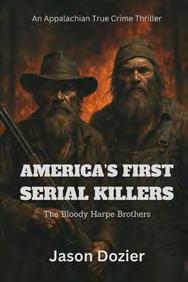
America’s First Serial Killers: The Bloody Harpe Brothers
April 2025
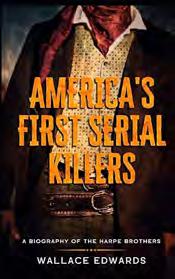
America’s First Serial Killers: A Biography of the Harpe Brothers
Wallace Edwards
Anaheim, CA, Absolute Crime Press, 2020
roadside as a grisly warning.
After Micajah’s and Wiley’s deaths, their three women were taken to Russellville, tried as accessories to the Harpes’ crimes, and acquitted. Following their release, Wiley’s wife (he had legally married her) went to live with her father and eventually married a respectable citizen. One of Micajah’s “wives” settled in Russellville and, according to one chronicler, “lived a normal life.”
Living under an alias, the other married in 1823 and moved to Illinois. It is not known what became of the two surviving children. In all the time they were with the Harpes, the three women, who clearly suffered terrible abuse, never attempted to escape, even when the opportunity presented itself.
Various historians have attempted to link the Harpes’ murder spree to a bitter disappointment in the outcome of the American Revolution. In fact, as with such modernday serial killers as Ted Bundy and Kentucky’s “Angel of Death” Donald Harvey, their psychopathy calls for no justification at all. The Harpes simply enjoyed killing for the sake of killing. Writes biographer Edwards: “They were indiscriminate murderers dispatching people they came across with complete abandon. Their crimes were for the most part devoid of any detectable motive.”
One thing is certain: With the deaths of the Harpes, settlers throughout the frontier breathed a collective sigh of relief. Q
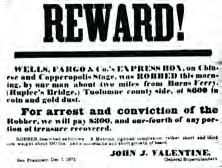
“The Harpe Brothers”
Karen Hart
Manuscripts and Folklife Archives, Library Special Collections, Western Kentucky University, 1971
Contains wonderful accounts of the Harpes as told through in-depth interviews with several older Kentuckians

Bloody Brothers: America’s First Serial Killers
Henry Lincoln Keel
Lafayette, TN, Deep Read Press, 2021
BY KIM KOBERSMITH
With the scary season approaching, it’s a great time to tour these creepy locales and attend haunted happenings across Kentucky
Some places in Kentucky are perfect for Halloween. They have a high level of paranormal activity, repeated sightings of unexplained figures, or gruesome histories that continue to be told. Many of these locations capitalize on the season with entertaining and sometimes unnerving events that might have you looking back over your shoulder with apprehension.
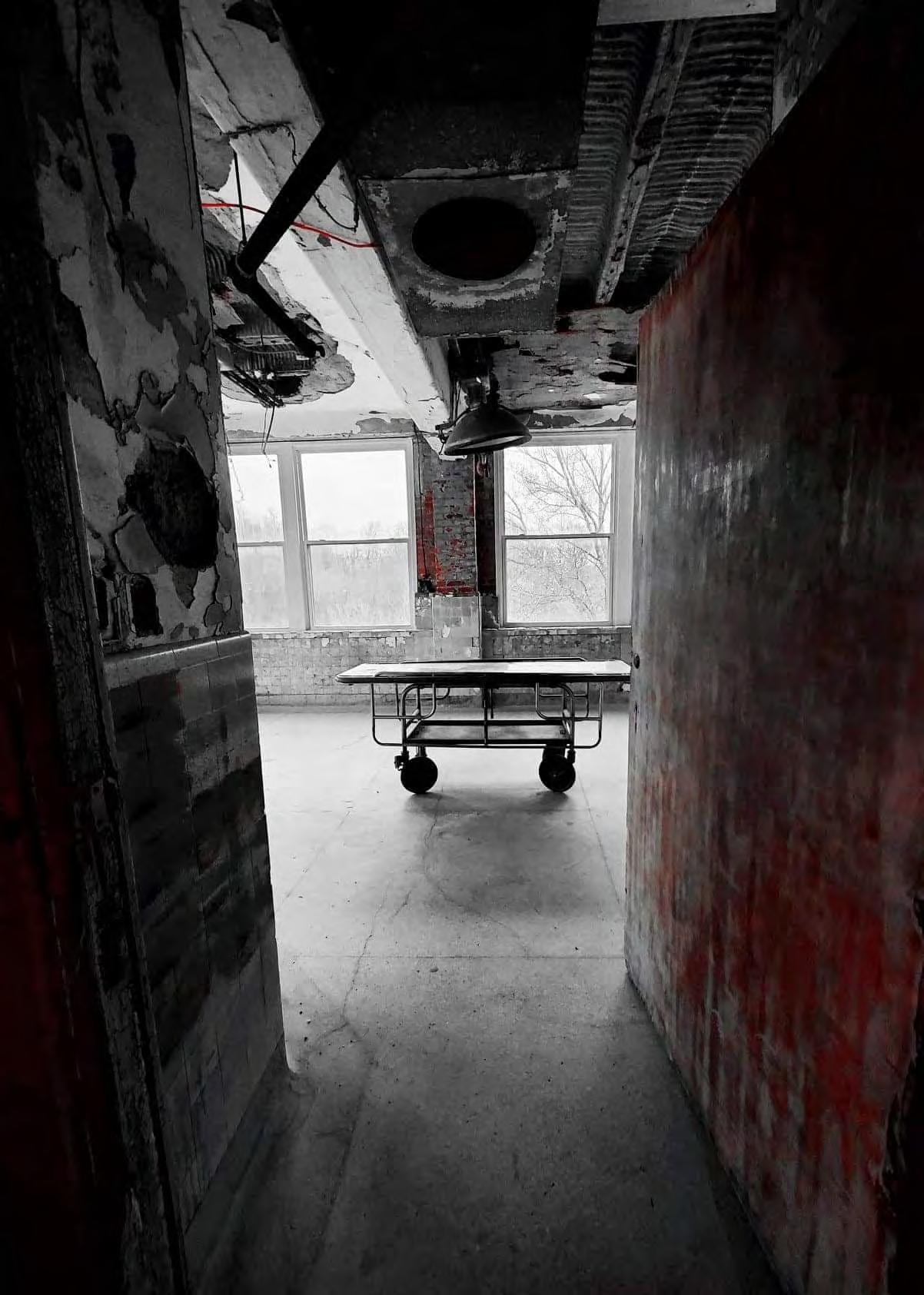
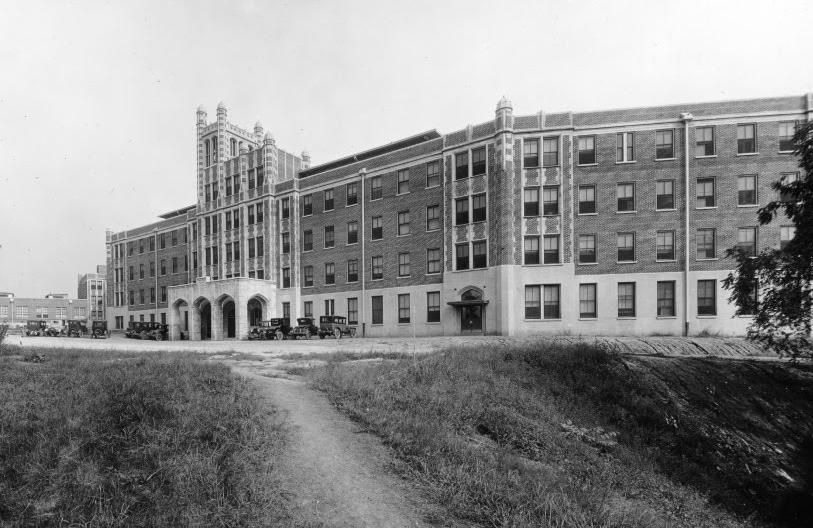
The forbidding Tudor Gothic structure in Jefferson County is unsettling even from the outside. Peeling paint and broken windows add to its sinister feel.
Completed in 1926, the facility was constructed in response to a severe tuberculosis outbreak in the county. Wetlands along the Ohio River were the perfect breeding ground for the bacteria responsible for the disease. This five-story building held up to 400 advanced pulmonary tuberculosis patients until its closure in 1961, after the antibiotic drug streptomycin drastically reduced the effects of tuberculosis.
For many patients, the sanatorium was their last earthly home. Tales abound of those whose spirits remain: a mysterious man in white who drifts through the corridors, a spectral boy who plays ball in the hallways. After its closure, Waverly Hills gained notoriety as a spot for ghost hunts and paranormal investigations. It is considered one of the world’s most haunted places.
Now on the National Register of Historic Places, the restored structure is open to the public for tours, paranormal evenings and overnight investigations throughout the year. The annual Haunted House event takes visitors to an even more thrilling level.
No reservations are needed for the Haunted House, held every Friday and Saturday through October.
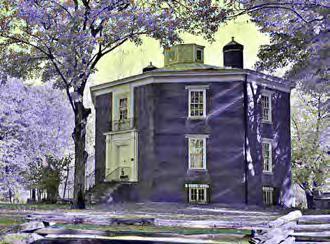
By day, this uniquely shaped home museum in Simpson County is a place to learn antebellum history. But at night, it’s revealed as one of the most haunted places in the South. Stories of ghosts include those of resident family members, enslaved people and soldiers from both sides of the Civil War. Periodic ghost tours take place throughout the year. In October, these hunts will be offered every Friday and Saturday night, with the opportunity to participate in flashlight tours of the mansion during the week.
OCTAGONHALLMUSEUM.COM
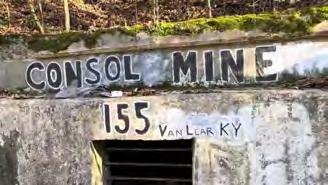
Almost everyone who steps into this Johnson County museum has an experience of the unseen world—strange apparitions, “shadow people,” noises and even direct communication with those beyond the veil. The curious can arrange a specialized paranormal tour or get their spooky on at the Haunted Museum, held Fridays and Saturdays in October.

The Shakers were known for their adherence to pacifism, celibacy and honesty. But their intention to create a heavenly paradise on earth didn’t mean they escaped the more macabre realities of life. On Spirit Strolls, held Friday and Saturday evenings in September and October, tour guides recall tales from the darker side of Shaker Village in Mercer County.
Staff reworked the tour last year to add new and violent tales pulled straight from history. A sentence in an archived Shaker journal from 1872, for example, revealed that a probationary community member was arrested for murder. John Gunsawley, a strapping Lexington stonemason, was not pleased to hear that his wife’s family didn’t think well of him. The feud between him and his wife’s sister’s boyfriend reached its peak when Gunsawley’s threats and menacing door-knocking went unanswered. The bullet he shot through a window aimed true, and he spent the next nine months hiding out at Shaker Village under an assumed name.
“We filled out the story through court transcriptions and penitentiary records in the Kentucky Department of Library and Archives, even down to the words he was shouting as he ran down the street after the shooting,” said Becky Soules, the village program and collections director. “It’s not a surprise his time with the Shakers didn’t work out.”
The lantern-lit walk traverses the community’s main thoroughfare and ends in the graveyard. The vibe is gruesome rather than supernatural or spooky, with themes of painful injury and murder. Organizers recommend limiting the tour to those ages 16 and over. Sometimes the spooky history expands beyond one building...
SHAKERVILLAGEKY.ORG
Explore the historic buildings of La Grange. Visitors on a two-hour candlelit walk might meet some of the town’s previous inhabitants—hearing unidentified whispers or seeing the outlines of ghosts. All proceeds support the maintenance and restoration of the historic structures. Tours take place on Fridays and Saturdays in October and are not recommended for children under 12.
LAGRANGEMAINSTREET.ORG/SPIRITSOFLAGRANGE
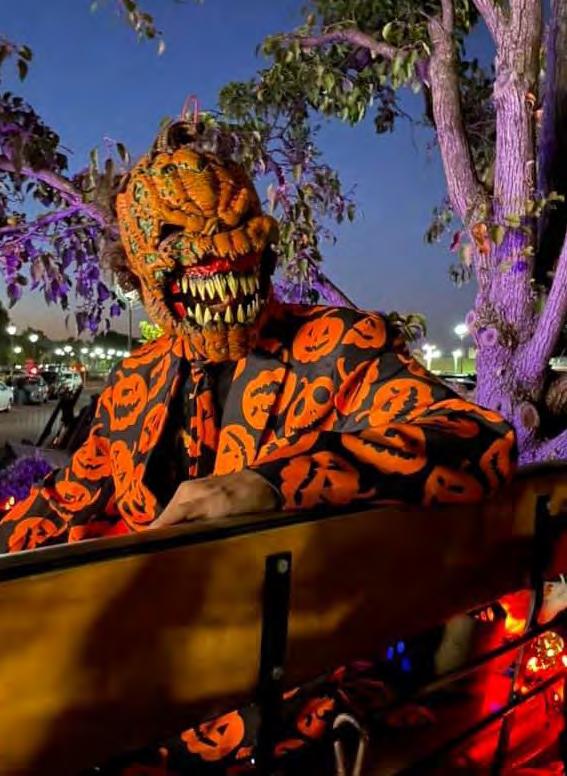
Step into a spooky carriage for an hour-long ride and haunted tour of downtown and the Lower Town neighborhood of Paducah. Guests will hear stories of a Confederate soldier, a former newspaper owner, child spirits and local mummy legend Speedy. Rides are available during weekends in October.
Maybe events are more your thing—gathering with a crowd and sharing scary and wondrous aspects of the season together. Even better, ones that are uber-local experiences. An all-ages festival or a movie marathon might be just the ticket!
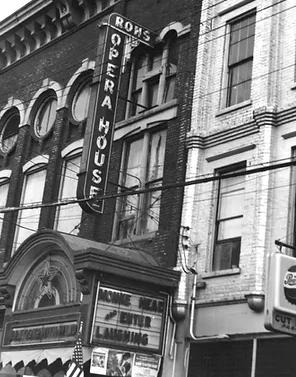
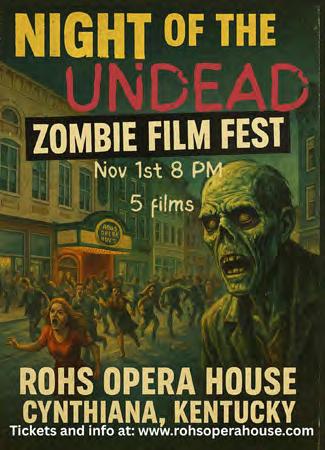
This all-night zombie film fest is set for Nov. 1 at 8 p.m. at the Rohs Opera House in Cynthiana. Visitors will view five films and spend the night in one of the most haunted buildings in Kentucky. Rohs Opera House recently was featured on the Biography Channel’s My Ghost Story. Or visitors can schedule their own paranormal investigation on a Friday or Saturday night to see what transpires.
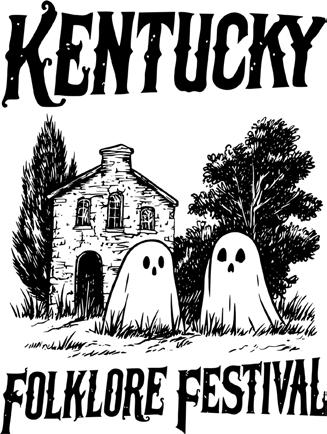

The Kentucky Folklore Festival in West Point (Hardin County) Oct. 25 explores the Commonwealth’s deep roots in haunted history, magic, mysticism and storytelling. The fest began as a way to honor Leah Smock, a young herbalist and suspected witch from the 1800s who reportedly haunts this area southwest of Louisville. The festival, formerly the Battletown Witch Festival, has expanded its focus this year.
“It includes everything weird, wonderful and spooky across Kentucky, so people from all parts of the state are represented,” said organizer Annie Hamilton with Hearth and Hallows Creative Event Management. “The festival is absolutely family friendly and not about being scared but about having fun.”
Presenters at the fourth annual gathering include Packman Paranormal, the team behind The Hauntings of Fort Duffield. Explorations of the local Civil War-era earthworks have revealed a host of hauntings, which speakers will share with attendees. Also attending is Black Wolf Paranormal, known for its investigations of the legendary Bell Witch Cave in Tennessee.
Gray’s Taproom Podcast will serve up wicked laughs with its paranormal comedy act. Storytellers will weave tales of Kentucky urban legends and historical folklore. Also on tap: a Sasquatch-calling contest and a cryptid creature costume contest.
Hamilton said organizers are well on their way to selling 10,000 tickets for the event. Food trucks, themed handmade artisan booths, and a beer garden will accompany the programming.
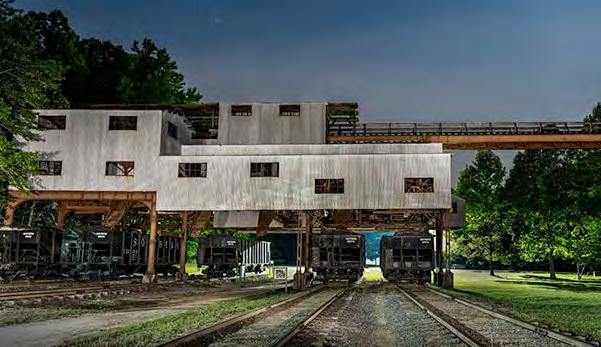
The former Blue Heron coal camp in McCreary County usually is a ghost town. Historical plaques and oral histories recall stories of those who called it home in the mine’s heyday.
But in October, the historical site in the Big South Fork National River and Recreation Area plays host to the Blue Heron Ghost Mine. Guests can earn junior ranger badges, watch living history demonstrations, and listen to local tunes before hearing spine-tingling tales from the nearby hills and hollows.

BY JACKIE HOLLENKAMP BENTLEY
When one thinks of pure maple syrup— aside from the delicious image of the drizzled amber liquid cascading down a stack of pancakes—the prevailing assumption is that it’s produced in New England and Canada. But a new University of Kentucky study revealed what a few in the Commonwealth already had discovered: Kentucky has the potential to become a significant maple syrup producer, generating millions of dollars for local economies.
The study estimated that Kentucky could generate from $6-$25 million in
economic impact, not to mention upwards of 1,000 new jobs.
Thomas Ochuodho, associate professor of forest economics and policy in UK’s Department of Forestry and Natural Resources, said it began in 2019, when he and agents from UK’s Cooperative Extension Service visited with maple syrup producers in Letcher County.
“They took us through some of the challenges that they had, and one of those was basically just lack of information,” Ochuodho said. “So many landowners have maple trees on their lands, [and] they are not even aware this is something they could do.
Those who were aware don’t know how they could do it and … [wanted to know if it was] economically viable and at what scale.”
Ochuodho and fellow researchers from UK, Purdue University and the U.S. Forest Service collected and pored over data on tree density across the Commonwealth, sap yield, the length of Kentucky’s sap-tapping season, and the current price of maple syrup.
With that research, Ochuodho and his colleagues used economic impact models to determine just how much maple syrup production could benefit not only producers but Kentucky’s economy as a whole.
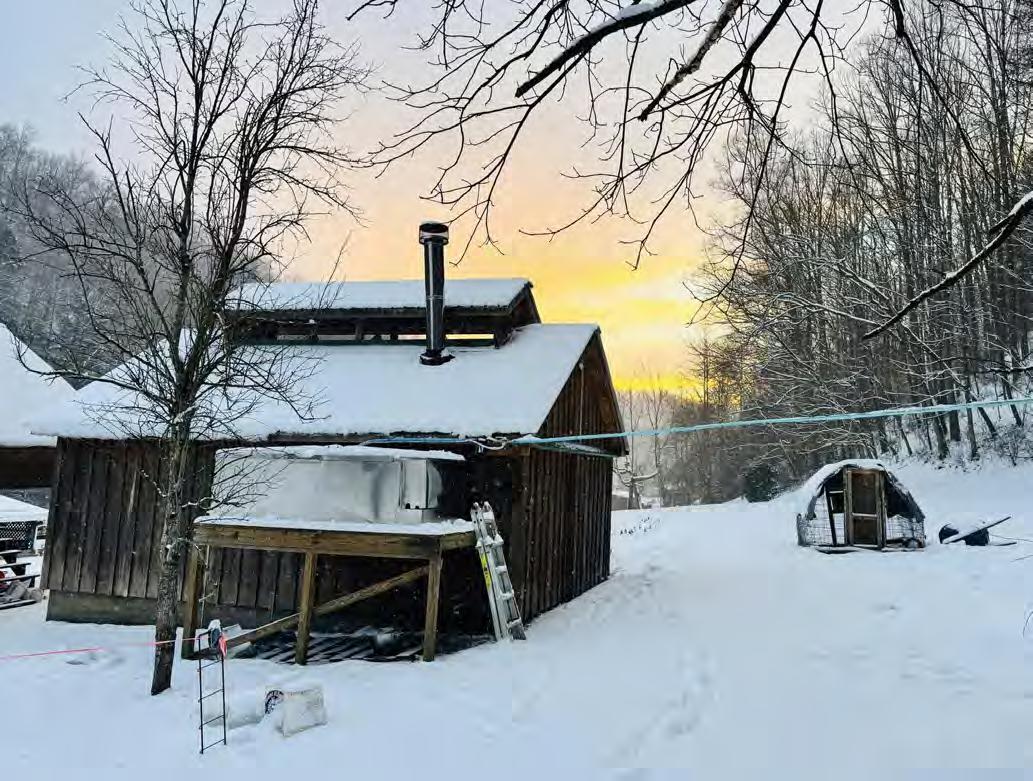
“Producers will purchase equipment … and it creates demand in the supply chain throughout the economy,” he said. “Those producers [then] use that income to make purchases in the economy, etcetera. We are looking at it from the very beginning to the end, where you have maple syrup at your dining table. That is the impact that you are seeing here.”
• • •
John Duvall, the president of the Kentucky Maple Syrup Association (KMSA) and horticulture technician at Eastern Kentucky University’s Department of Agriculture, said the study is a great way to show potential producers exactly how they can use this renewable resource year after year.
“We’re trying to help grow the
commodity, grow the industry here in Kentucky, so having that type of research come out just helps support what we’re doing,” Duvall said. “That’s what our association is all about— getting the word out there. There’re several of us who just found out in the last four or five years that it’s a possibility in Kentucky.”
Duvall said association membership has grown from more than a dozen participants to more than 40 in just two years.
“But there’re still lots of people I keep finding who are making maple syrup. They’re just not members yet,” he said.
For those who want to learn more about tapping into their land’s potential, the association is holding Kentucky Maple Syrup 101 workshops at county Extension
offices across the Commonwealth throughout October.
“If you want to get started, you can go and learn from somebody who has experience,” Duvall said.
For more in-depth education, KMSA is having its annual Kentucky Maple School on Nov. 1 at the Clark County Extension Office in Winchester.
Registration and information for both opportunities can be found on the association’s website, kymaplesyrup.com.
• • •
One of the first things interested landowners will discover is when their maple trees can be tapped. The key is weather: Freezing temperatures overnight pull the sap
Interested in learning more about how to make maple syrup from the trees on your land? The Kentucky Maple Syrup Association will hold beginner workshops at Extension offices across the Commonwealth through October. Attendees can meet maple syrup producers personally and discover the ins and outs of the process.
Here’s a list of workshop times and dates. Participants are asked to contact the local Extension office to register. More information can be found at KMSA’s website, kymaplesyrup.com
OCT 1
6PM Kenton County Ext. Office
OCT 7
6PM Calloway County Ext. Office
6PM Shelby County Ext. Office
OCT 8
6PM Metcalfe County Ext. Office
OCT 15
5PM Breathitt County Ext. Office
OCT 21
6PM Harlan County Ext. Office
6:30PM Madison County Ext. Office
6PM Pulaski County Ext. Office
OCT 23
6PM Henderson County Ext. Office
6PM Bath County Ext. Office
OCT 28
5:30PM Letcher County Ext. Office
OCT 29
9-11AM Nelson County Ext. Office
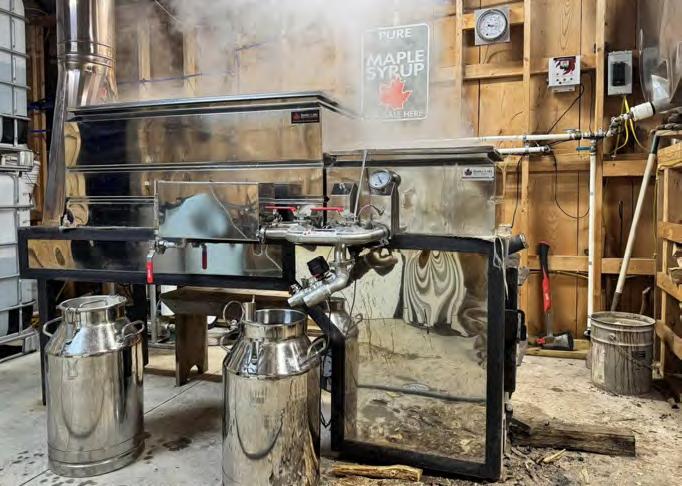
up the tree via osmotic pressure. Then, as temperatures climb above freezing during the day, the sap flows down to be captured, drawn and collected in either good oldfashioned buckets or a more elaborate piping system connecting multiple trees across the property.
In Kentucky, that optimal season is about six to eight weeks in December and January.
“It depends,” Duvall said. “The colder the better … We try to find which six to eight weeks during the winter you’re going to have the most days in a row” of freezing and thawing.
Once the sap is collected, the next step is to boil it down to evaporate the water content, caramelizing the remaining sugars into the familiar golden-brown syrup. While sugar content varies among trees, typically 43 gallons of sap can be reduced to 1 gallon of syrup, per KMSA.
In addition to KMSA’s education initiatives, the organization collaborates with UK’s Department of Forestry and Natural Resources on its comprehensive maple syrup website. The site, ky-maplesyrup.ca.uky.edu, features a list of FAQs, study guides and even budget templates from the
Kentucky Center for Agriculture and Rural Development.
Ochuodho said these guides for landowners and potential producers are tangible tools born from the maple syrup study’s economic impact discoveries.
“Somebody’s producing so much, and he wants to expand his capacity, so what will he need, and how much would that cost him?” Ochuodho said. An individual landowner can look at the guide “on his screen and say, ‘I have how many trees here? OK, so how much do I need to invest here? OK, if I put in this much, I need this, and I need this, and I need this. So, what does that mean in terms of the returns that I can get?’”
For Duvall and those who have already discovered the benefits of maple syrup production, the returns go beyond financial gain.
“Maple syrup has been around for a long time. People just forgot about it, stopped making it around here,” Duvall said. “We’re trying to help bring it back—bring back that art of making maple syrup. I just started in 2020, and once you kind of get bitten by that sugar bug, you just want to keep doing more and more and more.” Q
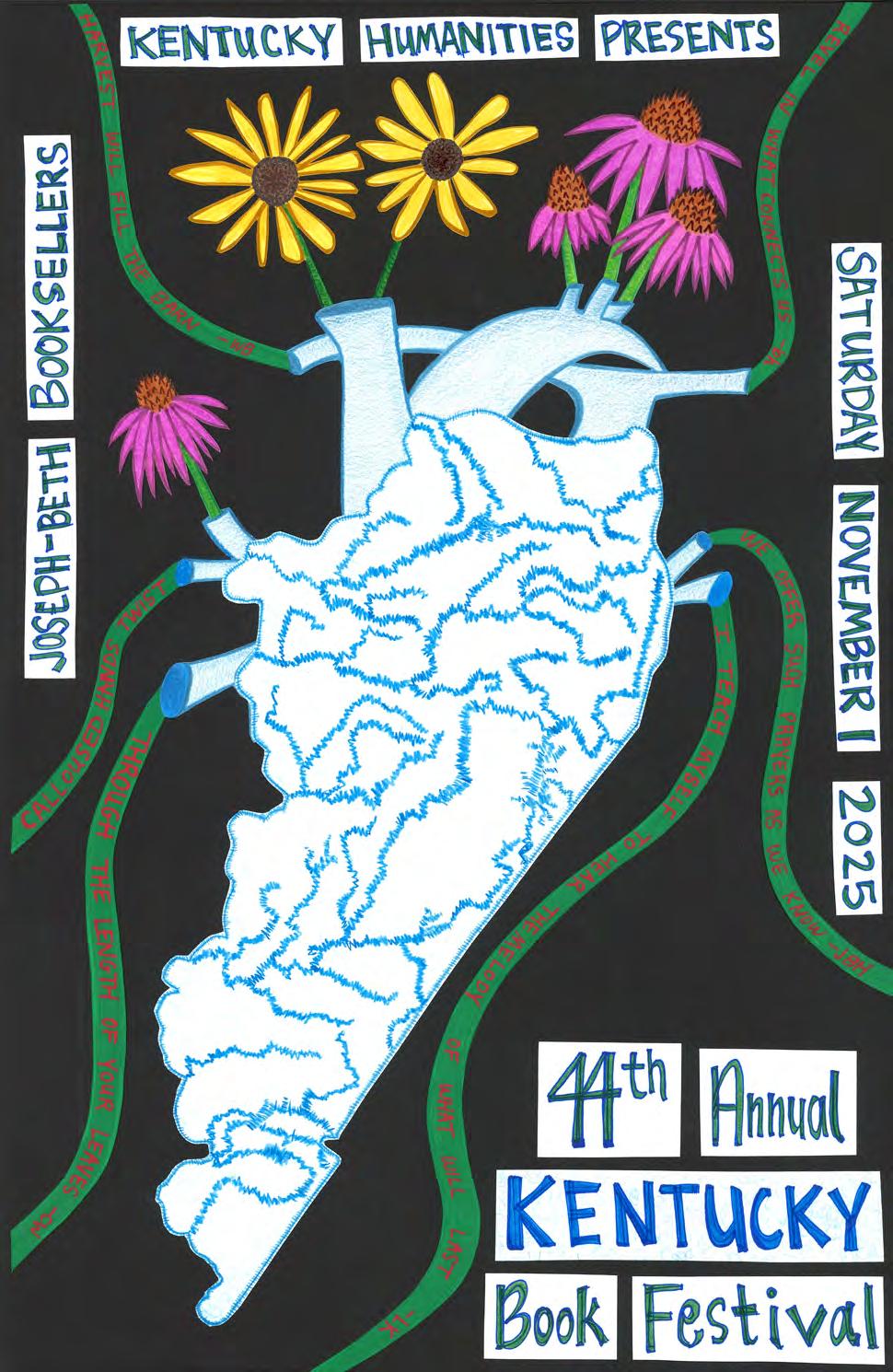
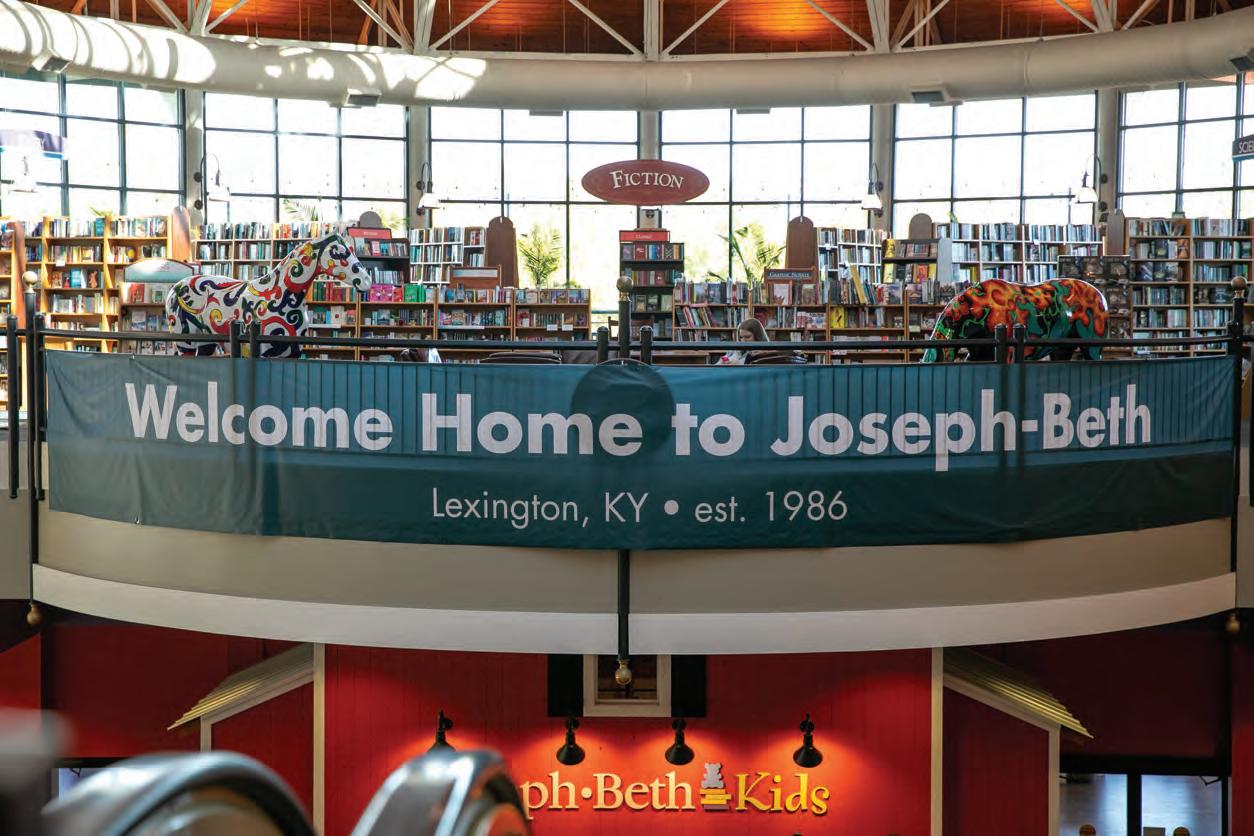
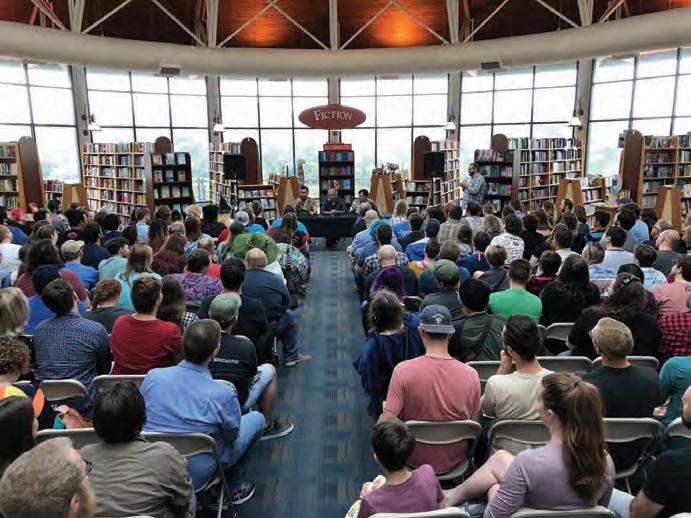




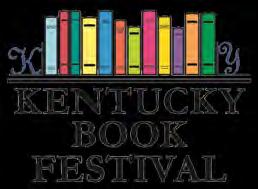
We at Kentucky Humanities are thrilled to welcome you to the 44th edition of the Kentucky Book Festival! This year promises to be an unforgettable experience, and we can’t wait for you to join us on Saturday, November 1. We encourage you to sit in on one of the many panel discussions or stage conversations, browse the author’s gallery, listen in on a story time, and check out the fun activities for the next generation of readers. But don’t just come out on Saturday—join us for the added excitement throughout the week! There’s so much to see and do, and we want you to be a part of it all.
We are grateful to our partners at Joseph-Beth Booksellers for once again hosting and assisting with planning the festival. Generous contributions from countless individuals and organizations make this festival possible. We owe all our sponsors and partners an enduring thanks. In fact, because of our amazing sponsors, hundreds of children (age 14 and under) will receive vouchers for a free book of their choice at the festival again this year. It’s heartwarming to see the joy on their faces as they pick out their new favorite book.
We also want to express our deepest gratitude to our incredible volunteers. Their dedication and enthusiasm are the heartbeat of this festival, and we couldn’t do it without them. We hope that everyone who attends the Kentucky Book Festival finds an interesting book to enjoy, meets a new favorite author, and leaves enriched with the literary love that is so abundant in our Commonwealth. Looking forward to seeing you there!
Jay McCoy
ON BEHALF OF THE KENTUCKY BOOK FESTIVAL TEAM NOVEMBER 1 9:30AM–3:00PM

Joseph-Beth Booksellers 161 Lexington Green Circle Lexington, KY 40503
Kentucky Humanities will host several events during the week leading up to the Kentucky Book Festival (October 27–31). Additional conversations, discussions, and presentations will take place on various stages at the KBF on Saturday, November 1. On Saturday, authors will sign books on the lower level within Joseph-Beth Booksellers with access via escalator and elevator. Maps will be provided on the day of the festival. The schedule of events and author lineup are subject to change.
STAY UPDATED
For the most up-to-date author lineup and event schedule, follow us here:
CHAIR
Jennifer Cramer, Ph.D. Lexington
VICE CHAIR
Hope Wilden, CPFA Lexington
TREASURER
Jordan Parker Lexington
SECRETARY
Lou Anna Red Corn, JD Lexington
EXECUTIVE COMMITTEE MEMBER
Penelope Peavler Louisville
EXECUTIVE COMMITTEE MEMBER
Andrew Reed Pikeville
Aaron Asbury Ashcamp
Chelsea Brislin, Ph.D. Lexington
Teri Carter Lawrenceburg
Brian Clardy, Ph.D. Murray
Selena Sanderfer Doss, Ph.D. Bowling Green
Benjamin Fitzpatrick, Ph.D. Morehead
Clarence Glover Louisville
Nicholas Hartlep, Ph.D. Berea
Chris Hartman Louisville
Sara Hemingway Owensboro
Eric Jackson, Ph.D. Florence
Philip Lynch Louisville
Lois Mateus Harrodsburg
Keith McCutchen, Ph.D. Frankfort
Tom Owen, Ph.D. Louisville
Libby Parkinson Louisville
Wayne Glover Yates Princeton
Bill Goodman Executive Director
Marianne Stoess Assistant Director/ Editor, Kentucky Humanities
Kay Madrick Development Director
Derek Beaven Program Officer
Zoe Kaylor Grants Administrator
Jay McCoy
Kentucky Book Festival & Center for the Book Director
Joanna Murdock Administrative Assistant
Katerina Stoykova Director of Educational Outreach
Julie Klier Consultant - Event Production/ Logistics Manager
Kentucky Humanities is an independent, nonprofit affiliate of the National Endowment for the Humanities in Washington, D.C. Kentucky Humanities is supported by the National Endowment and by private contributions. In addition to producing the Kentucky Book Festival, Kentucky Humanities offers Kentucky Humanities at the Schools programs, sponsors PRIME TIME Family Reading Time®, offers Kentucky Chatauqua® and Speakers Bureau programs, hosts Smithsonian traveling exhibits throughout the state, publishes Kentucky Humanities magazine, serves as the Kentucky affiliate for the Library of Congress Center for the Book, and awards grants for humanities programs. Views expressed in this publication do not necessarily reflect the views or policies of the NEH or Kentucky Humanities board and staff. Learn more at kyhumanities.org.
MON OCTOBER 27 at 7:00 PM
Gather your team and head over to Goodwood at Lexington Green for an evening dedicated to books and the Bluegrass! Test your literary knowledge, compete for exciting prizes, and savor delicious food and great company. It's a night full of good food & good times that you won't want to miss!
Free and open to the public—bring your friends, famil, and fellow book lovers for a fantastic time. See you there!
Goodwood • 200 Lexington Green Circle, Lexington
TUES OCTOBER 28 at 7:00 PM

Join us as we read and discuss the newest novel of the Port William series, titled Marce Catlett: The Force of a Story by prolific novelist, poet, essayist, environmental activist, cultural critic, farmer and Kentucky native Wendell Berry. This event will include readings from the book by Kentucky authors as well as a visual exploration of the beautiful setting of Port William (based upon Port Royal, Kentucky).
Tickets are required with online registration and book pre-order.
Joseph-Beth Booksellers, 161 Lexington Green Circle
Events and authors subject to change. Visit kybookfestival.org for updates, ticket information and schedule of events.
WED OCTOBER 29 at 7:00 PM
Silas House in conversation with Gwenda Bond about his new mystery, Dead Man Blues

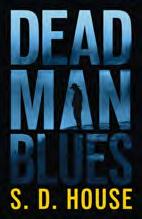

Don't miss the chance to hear renowned Kentucky author Silas House read from his thrilling new mystery, Dead Man Blues. We will dive into the world of mystery and intrigue and join in a conversation between best-selling authors Silas House and Gwenda Bond. Nationally known for writing across genres, with a variety of novels from romantic comedies to historical fantasies to young adult adventures, Bond will discuss with the former Kentucky Poet Laureate his foray into writing a mystery as S.D. House. House’s debut historical crime novel is set in a small town on the Kentucky-Tennessee border.

Tickets are required with online registration and book pre-order of Dead Man Blues. Books by both authors will be available for sale at the event.
Joseph-Beth Booksellers, 161 Lexington Green Circle
THU OCTOBER 30
A Way With Words with Martha Barnette & Grant Barrett



Join us at JosephBeth Booksellers for a special event with A Way with Words, the upbeat and lively public radio show and podcast about language, culture and communication. Each week, listeners call in to discuss word origins, slang, regional dialects, grammar and more with co-hosts Martha Barnette (a Louisville native) and Grant Barrett. Since its launch in 1998, the popular show has gained a devoted nationwide audience and is broadcast in 43 states across the U.S. and beyond. At our event, the hosts will share behind-the-scenes stories, answer questions and engage the audience in a lively discussion about the ways language shapes our lives.

FRI OCTOBER 31
Tickets are required with online registration and book pre-order of Friends with Words Books by both authors will be available for sale at the event.
Joseph-Beth Booksellers, 161 Lexington Green Circle
A SPECIAL EVENT COMING SOON! Watch the KBF website and social media for an announcement with more details about a special guest and program.

ALL THESE GHOSTS DEAD MAN BLUES

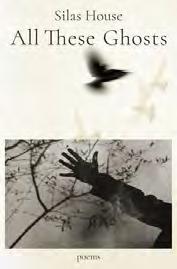
Silas House is the New York Times bestselling author of novels, nonfiction, plays and poetry. A former Kentucky Poet Laureate and Grammy finalist, House has received the Duggins Prize, Southern Book Prize, E.B. White Award, Lee Smith Award and many others. He teaches at Berea College and at the NaslundMann Graduate School of Creative Writing. A native of Eastern Kentucky, he now lives in Lexington.
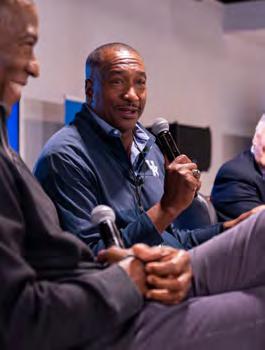
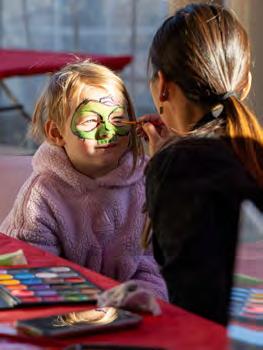

SYLVIA AHRENS Out on a Limb
B. ELIZABETH BECK Swan Songs
BILLY PARKS BURTON Turn a Blind Eye
CRYSTAL CAUDILL Written in Secret
LEE COLE Fulfillment
SUSAN COVENTRY Till Taught by Pain
CHRISTINA DOTSON Love You To Death
SHERRIE FLICK I Have Not Considered Consequences
JULIA FLINT
We Were Promised: How an Appalachian Grandmother Fought a Corporate Giant
ANN H. GABHART The Pursuit of Elena Bradford
KRISTEN GENTRY Mama Said
MATT GOLDMAN The Murder Show
CHRISTOPHER J. HELVEY Revolution
JULIE HENSLEY Five Oaks
SILAS HOUSE Dead Man Blues
NANCY JENSEN In Our Midst
WENDY JETT Woman
BOB JOHNSON The Continental Divide
CHRIS MCCLAIN JOHNSON Three Guesses
TONI ANN JOHNSON Light Skin Gone to Waste
SARAH LANDENWICH The Fire Concerto
DWAIN W. LEE Plausible Deception
MADGE MARIL Slipstream
JAMES MARKERT Spider to the Fly
LEE MARTIN The Evening Shades
T.J. MARTINSON Her New Eyes
CATHERINE MCKENZIE No One Was Supposed to Die at this Wedding
JOHN WINN MILLER Rescue Run: Capt. Jake Rogers’ Daring Return to Occupied Europe
ELIZABETH BASS PARMAN Bees in June
STEVEN PENN A Trunk in the Basement
CYNTHIA REEVES The Last Whaler
MARK RIGNEY Vinyl Wonderland
JULIA SEALES A Terribly Nasty Business
BENJAMIN RUE SILLIMAN Exiting the Bluegrass Turnpike
VIRGINIA SMITH Wed and Gone
ALLEGRA SOLOMON There’s Nothing Left for You Here
DAVID STARKEY
The Fairley Brothers in Japan
ERIN CECILIA THOMAS I Watched You from the Ocean Floor
GERALD TONER Christmas in Our Time
NATHAN VANDERFORD & HOLLY BURKE Cancer in Appalachia: A Collection of Youth-Told Stories Volume 2
LAWRENCE WEILL The Metaphysics Shoppe of Wylers Ford
TJ WEST Country Road Romance
MARTHA A BARNETTE Friends with Words: Adventures in Languageland
GRANT BARRETT Perfect English Grammar
MARVIN BARTLETT Spirit of the Bluegrass
JAN BRANDENBURG
The Modern Mountain Cookbook: A Plant-Based Celebration of Appalachia
JENNIFER BRIAN
Classic Cocktail Revival
BRYAN S. BUSH
Samuel One-Armed Berry: Shaker, Teacher, Ruthless Civil War Guerilla
DAVID CHAFFETZ
Raiders, Rulers, and Traders: the Horse and the Rise of Empires
ANGELA CORRELL
Village Life: Discover Tuscan-Inspired Hospitality and Intentional Living
TONY CRUNK Hopkinsville
DEEDEE CUMMINGS How To Dream
ALBERT DEGIACOMO
Awakening To Light. Three Plays
LOUIS S. DELUCA
Old-Time Kentucky Farmsteading Ways and Means From the Journals of Herbert Lee Clark
ELIZABETH DEWOLFE
Alias Agnes: The Notorious Tale of a Gilded Age Spy
ELIAS DORRIN EELLS
Cocktails and Consoles 75 Video Game-Inspired Drinks to Level Up Your Game Night
CHERYL L. ERIKSEN
Greyhound: The Remarkable Story of the Legendary Racehorse Who Inspired a Nation
GERALD FISCHER
Guerrilla Warfare in Civil War Kentucky Volume II Legacy of the Irregulars
DENIS FLEMING JR. Thomas Jefferson and the Kentucky Constitution
LAURA GADDIS Mosaic
RAE GARRINGER
To Belong Here: A New Generation of Queer, Trans, and Two-Spirit Appalachian Writers
JACQUELINE
JANE HAMILTON
A Pencil Grows in Kentucky
BOB HILL Out Here
LISA HOFFMAN
STEM SMART
Parenting: A Practical Guide for Nurturing Innovative Thinkers
JANET HOLLOWAY Pathlights
MARTHA S. JONES
The Trouble of Color: An American Family Memoir
BRIGID KAELIN Lakeside
SONYA LEA

American Bloodlines: Reckoning with Lynch Culture
JOHNISHA LEVI
Number’s Up: Cracking the Code of an American Family
GEORGE ELLA LYON Don’t You Remember? (Revised & Updated)
ELIZA MCGRAW
Astride: Horses, Women, and a Partnership That Shaped America
KEVEN MCQUEEN
The Judge Mulligan Poisoning and Other Historic Lexington Crimes
MARIE MITCHELL
Paranormal Kentucky: An Uncommon Wealth of Close Encounters with Aliens, Ghosts, and Cryptids
CHRISTOPHER NEWMAN
Marion: The Marion Miley Story, 1914-1941
JAMES C. NICHOLSON Racing’s Return from the Brink: The Incredible Comeback of Old Rosebud and American Horse Racing
NANCY O’MALLEY
Kentucky Frontier to Commonwealth: Historical Archaeology at Daniel Boone’s and Hugh McGary’s Stations
LAURA A. PARÉ
See You in August: The Quilts of the Michigan Womyn’s Music Festival
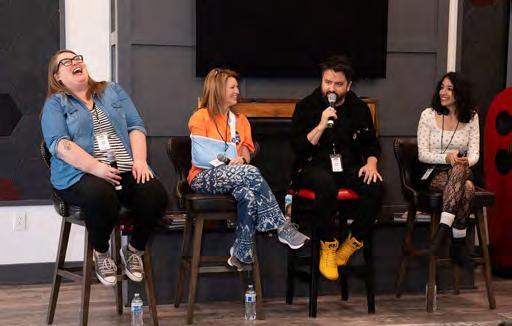
SUSAN REIGLER
Kentucky Bourbon
SHARON ROGGENKAMP
The Life & Times of Hammerin’ Hank Ward: The Kentucky Park & Highway Commissioner Who Chased Riverfront Loan Sharks, Tangled with Arsonists in the Parks, and Banished Run Down Dump Trucks
GRETCHEN RUBIN
Secrets of Adulthood: Simple Truths for Our Complex Lives
SHAUNNA SCOTT Toward Just Transitions: Visions for Regenerative Communities in Appalachia
MANDI SHEFFEL
The Nature of Pain: Roots, Recovery, and Redemption amid the Opioid Crisis
DAVIS SHOULDERS Queer Communion: Religion in Appalachia
BELINDA SMITH-SULLIVAN Cocktails Southern Style
ELAINE F. WEISS
Spell Freedom: The Underground Schools that Built the Civil Rights Movement
JAMES WELLS
Because: A CIA Coverup and a Son’s Odyssey to Find the Father He Never Knew
JESSICA WHITEHEAD
Driftwood: The Life of Harlan Hubbard
BOB WILLCUTT Gratz Park: The Heart of Historic Lexington
FIONA YOUNG BROWN
Secret Lexington: A Guide to the Weird, Wonderful, and Obscure
JOSEPH ANTHONY Playing Fair
DAVID B. CAZDEN New Stars And Constellations (Bainbridge Island Press, 2024)
JOHN COMPTON my husband holds my hand because i may drift away & be lost forever in the vortex of a crowded store
TONY CRUNK
Cosmogony: Night & Time



FRIENDS WITH WORDS: ADVENTURES IN LANGUAGELAND
Martha Barnette is a longtime journalist and co-host for two decades of the popular radio show and podcast A Way with Words. A Louisville native who did graduate work at the University of Kentucky, she has worked as a reporter for The Louisville Times and The Washington Post, and as an editorial writer for The Courier-Journal. She lives in San Diego, California.
RONALD W. DAVIS
The Shoes of the Fisherman’s Wife: Poems
KATHLEEN DRISKELL Goat-Footed Gods
WESLEY HOUP
Strung Out Along the Endless Branch
SILAS HOUSE All These Ghosts
REBECCA GAYLE HOWELL Erase Genesis
LIBBY FALK JONES Enchanting the Ordinary: Poems & Photographs
DANIEL LASSELL Frame Inside a Frame
DENTON LOVING Feller
ALESSANDRA LYNCH Wish Ave
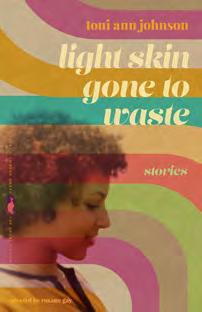

LIGHT SKIN GONE TO WASTE
Toni Ann Johnson has won the Flannery O’Connor Award, been shortlisted for the Saroyan Prize, and been nominated for an NAACP Image Award. Johnson’s forthcoming linked story collection But Where’s Home? won The University Press of Kentucky’s Screen Door Press Prize and is scheduled for release in February 2026. She is the final judge for the James Baker Hall Foundation Book Award this year.
JOHN W. MCCAULEY Kentucky is My Home: A Journey Into the Life of Jesse Hilton Stuart
CHRISTOPHER MCCURRY The Gospel of God Boy
ROSALIE MOFFETT Making a Living
KEVIN NANCE Smoke
PAT OWEN The Crossroad
JEREMY PADEN how to recognize god’s chosen
MARIANNE PEEL Untamed Arabesque
AMY RICHARDSON Out of Places
ROBERTA SCHULTZ Deep Ends
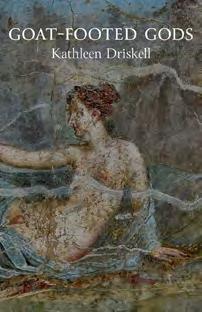


GOAT-FOOTED GODS
An award-winning poet, essayist and teacher, Kathleen Driskell is the author of five collections of poetry. Her poems and essays have been published in The New Yorker, Southern Review, Appalachian Review and other literary magazines. She is chair of the Naslund-Mann Graduate School of Writing at Spalding University. Driskell currently serves as Kentucky Poet Laureate.
Gretchen Rubin is one of today’s most influential observers of happiness and human nature. She’s the author of many books, including the blockbuster New York Times bestsellers The Four Tendencies and The Happiness Project, selling more than 3.5 million copies worldwide. She hosts the award-winning podcast Happier with Gretchen Rubin, where she explores practical solutions for living a happier life.
CARINE TOPAL Dear Blood, poems
ARTRESS WHITE A Black Doe in the Anthropocene: Poems
CECILIA G WOLOCH Labor: The Testimony of Ted Gall
ALFONSO ZAPATA To Pay for Our Next Breath: Poems
KASSIDY CAROLINE The Shadows We Hide
JAMIE D’AMATO The Good Vampire’s Guide to Blood & Boyfriends
DANI DIAZ Dreamover
KATHERINE ELIZABETH HALE-STRINGFIELD
The Mary Luck Tales: Witch’s Curse
MARIAMA J LOCKINGTON I’ve Got My Love to Keep Me Warm
P. ANASTASIA POE Prophecies: Dream Within a Dream
CARLOTTA A BERRY
There’s A Robot in My Closet
LYNN CELDRÁN
The Tales of Javi Ramirez: Dumplings for Breakfast
JULIA LYNNE COTHRAN Does a Gaggle of Geese Giggle?
DAWN CUSICK
The Astrochimps: America’s First Astronauts
AMANDA DRISCOLL
Under Anna’s Umbrella
TRACEY FELTNER FRANCIS
The Fluffy Brown Pup That Met His New Family
CAROL JUNE FRANKS Sled Ride Down Unrue Street
LATRELL HALCOMB Ouch Mr. Bear
BETHANY HEGEDUS
Batter for the First Day of School
CHRISTINE HERREN
A Light in the Darkness
LYNDSEY HORN
When the Mountains Speak
AMY KAPOOR Into the Blue: A Counting Adventure
RACHEL TAWIL KENYON You Can Sit with Me
JASON LADY
The Pure Shore Club
NATHAN WILL LANDRUM The Specters of Mammoth Cave
RACHEL LOFTSPRING Mila the Maker and the 200 Piece Jigsaw Puzzle
SUSAN MILLS
Oliver, the Outstanding and Original Oviraptor
ELIZABETH MONGAR
A Glowhearts’ Christmas Tale
MIRANDA MONTOYA Petunia Moves Again
SHAWN PRYOR
Taekwondo Academy: New Kid at the Dojang
TAMMI JO REGAN
Be Like Hank
VALERIE M. REYNOLDS
The Twirl of Being a Little Black Girl/The Joys of Being a Little Black Boy (Second Edition)
DAVID RICKERT
Checkups, Shots, and Robots: True Stories Behind How Doctors Treat Us
SANDRA RIPPETOE
Which Bird is the Best: Wise Owl Knows
MISAKO ROCKS Sew Totally Nala (Bounce Back Vol.3)
KAY SAFFARI
Uno, Dos, Tres Means One, Two, Three!
CHUCK SAMBUCHINO Goodnight, Pickleball
MOLLIE P SAWYER
A Kentucky Adventure
STACY SCHILLING
The ABC’s of Wavy and Curly Hair Starring...The Frizz Girls
ALEX SCOTT
Chuckles the Cheese and The Midnight Thief: A Cheesy Tale of Sneaky Snacks
ANDREW SHAFFER Literary Cats Coloring Book
JENNIFER SOMMER Every Creature Eats
GIN NOON SPAULDING ERRNT
SAM SUBITY Valor Wings
ROBYN WALL I Worked Hard on That!
ALEX WILLAN Mermaids are the Worst!
TAYLOR WOOLLEY Earth Rover
JESSICA YOUNG Today at School with Yesterday and Tomorrow
2025 IMAGE ARTIST K. NICOLE WILSON
K. Nicole Wilson dwells in art, possibility and Lexington. Originally from Maysville, she’s Limestone filtered, over 100 proof and often rye. K. Nicole completed most of her undergraduate work at the University of Kentucky and later earned an MFA in poetry in Cardinal country.

Each year, the Kentucky Center for the Book, a part of Kentucky Humanities, selects two books to represent Kentucky as part of the Library of Congress’ Roadmap to Reading during the National Book Festival. This year, the center chose Alix E. Harrow’s Starling House as the Adult selection and Amanda Driscoll’s Under Anna’s Umbrella ad the Young Readers selection.

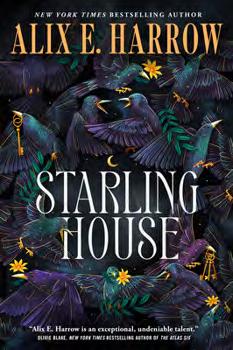
Alix E. Harrow is the bestselling author of The Ten Thousand Doors of January, The Once and Future Witches and Starling House. Her work has won a Hugo and a British Fantasy Award and been shortlisted for the Nebula, Southern Book Prize and Goodreads Choice awards. She’s from Kentucky but now lives in Charlottesville, Virginia, with her husband and their two semi-feral kids.


UNDER ANNA’S UMBRELLA
Amanda Driscoll’s newest picture book, Under Anna’s Umbrella, is her most personal and heartfelt story to date. She is also the author and illustrator of Duncan the Story Dragon and Little Grump Truck. Born and raised in Louisville, Amanda lives in Fisherville with her bunny, who thinks he’s a dog; her dog, who thinks he’s a human; and her husband, who thinks he’s a comedian.

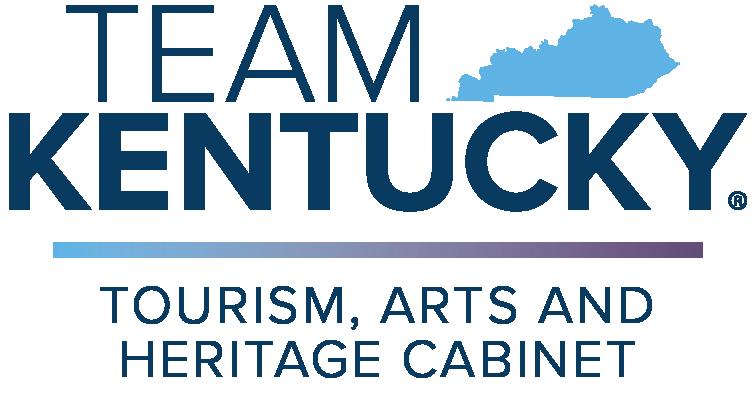
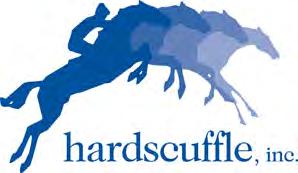



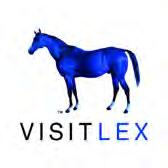
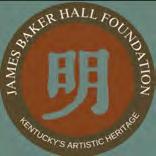


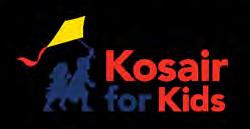










The 1901 Kentucky Derby was the 27th running of the Kentucky Derby. The race took place on April 29, 1901.
Volume 40, Number 8 – October 2025 All About Kentucky
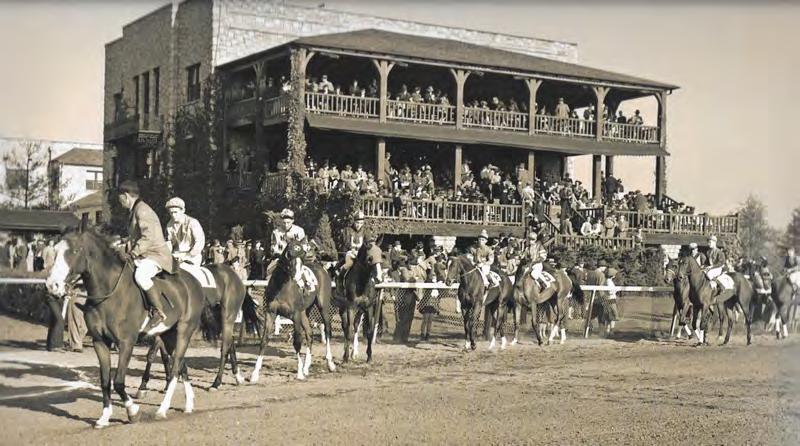
With a few exceptions, Keeneland Race Course in Lexington has hosted live race meets in April and October since 1936. This 1940 photo shows a post parade in front of the Keeneland Clubhouse. The stunning limestone buildings have evolved and been expanded over the years from this original version to the completion of the new paddock building this year.
This year’s fall meet runs Oct. 3-25.
Kentucky Log Cabins – page 45
The Inn at Gaines Crossroads – page 48
Sweet Sorghum – page 60

One-Year Subscription to Kentucky Monthly: $25
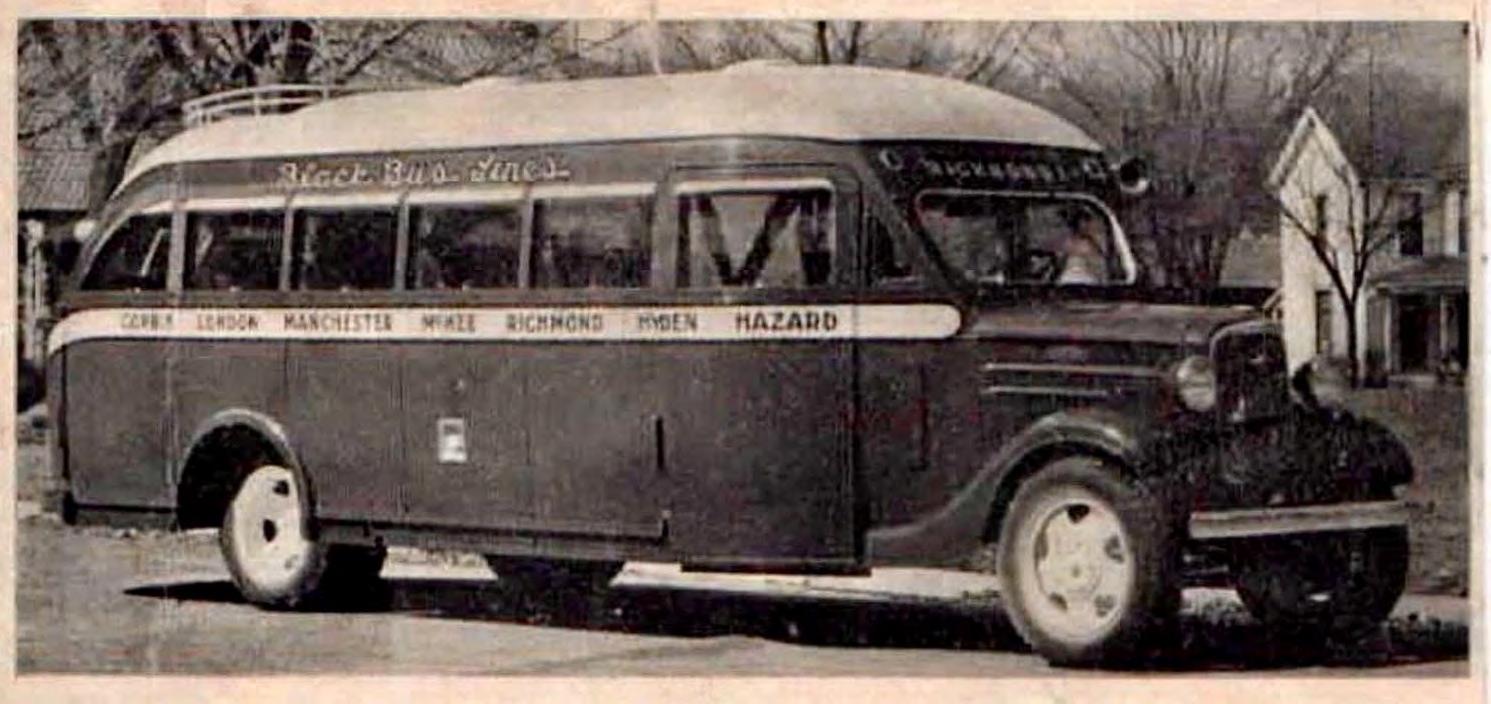
In1926, O.H. Black began a bus line that ran between London and Corbin, a distance of 14 miles. He owned Studebaker-style buses that had doors on both sides. Over the next few years, the line was successful, and his brothers, W.D.—known as Don—and Ramon, joined the company. They changed the name to Black Brothers Lines, expanded to more routes, and made their headquarters on Second Street in Richmond. By the 1940s, the brothers had a fleet of 30 buses, employed 50, and their buses traveled more than 1 million miles per year. The line opened up transportation among cities in Southeastern Kentucky, where transportation options were few.
Do you have memories of traveling via Black Brothers Lines? If so, share with our readers! Email Deb@ Kentuckymonthly.com or send by mail to P.O. Box 559, Frankfort, KY 40602.
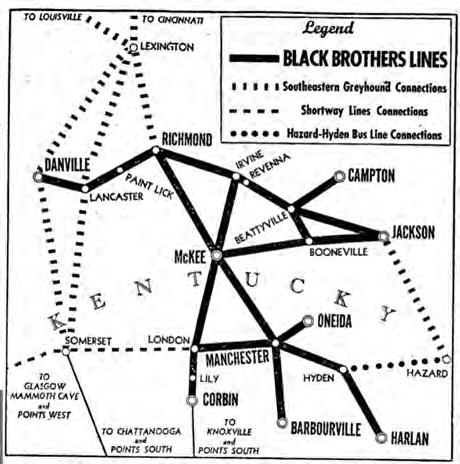
By Mark Mattmiller, Cynthiana
The earliest Kentucky settlers did not just plop down at the first place they came to. There were two things they absolutely had to have. The first was some kind of shelter, and the second was a source of water. The earliest houses almost always were built along the banks of rivers or creeks.
Another factor that often played into the settlers’ choice of location was making sure that they settled far enough away from other people to ensure there would always be the land that they needed for their own use.
The first houses were more shelters than what we would call a house today. Small poles with the bark removed were fitted and stacked together to make one square room. The poles were then chinked with clay. The result was a big improvement over the opened-faced lean-to in which they first sheltered. A fireplace was made from rocks somewhat skillfully fitted together, and the chimneys were made of even smaller pieces of stone. These structures were vulnerable to collapse from the elements of nature and, of course, fire. Few, if any, still stand in their original form today.
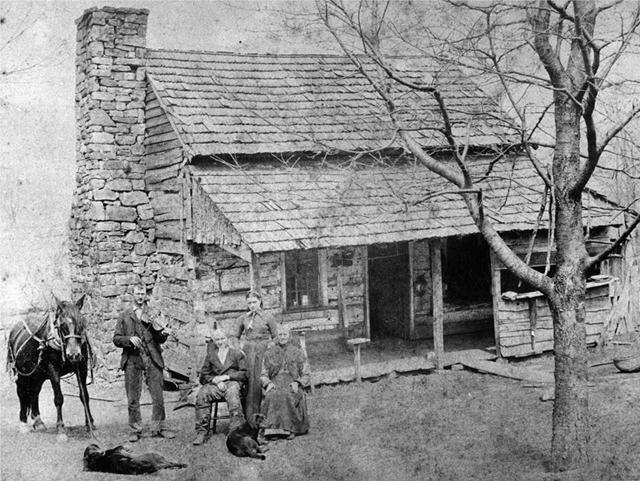
is an old log home. The first is the deep-set windows. The huge logs used to make these dwellings are bigger than the framing of a modern house, and that leads to windows that are set back a little further. Small-second floor windows are another giveaway. But the absolute number one revealing feature is the stone chimney: If the chimney is stone, the house is almost always log.
The old log houses that we see today were a huge improvement. The big logs were generally cut with an ax, then a saw, and hewn with an adz by one man and his family. When it came time to build the house, labor requirements multiplied. It took several strong workers to notch and lift the logs. Limestone rocks and clay were used to chink them. Cedars split with a froe were used to make shingles for the roof. A window or two and a door were usually added. Many had wood floors, and that was no small thing.
The chimneys were the final addition, and they were works of art: The stones were not just slapped together. It took skilled stone masons to design and make them. Rarely, if ever, did they collapse or fall apart without some human taking it down intentionally.
Hundreds if not thousands of these well-made log houses still stand today. They are everywhere. Most of them have been covered with modern-day wood siding, but there are several tell-tale signs that underneath this siding
They were still building these beautiful log structures until about 1875, and the later ones were more frequently placed at the tops of hills and along the hillsides and not so much along the creek banks. This leads, of course, to the question of what was the water source.
In Kentucky there are pure water springs everywhere (some people call them “veins”), and many of these run 365 days a year. When the early 19th century Kentuckians decided to build on higher ground, they would not have given even the slightest thought to starting before they found a spring. These were the days before roof gutters and cisterns, and a source of water was still their first consideration.
Today, if you see a house with an old stone chimney, and it is not close to a creek or river, take a walk around the grounds below the structure. You will find a springhouse, a running spring, or the remains of one.
It’s all there at these old log homes. There is history. The talent and effort that it took to build them is always a wonder, and you can almost feel the presence of all who ever lived there. Each one of these old homes, and the grounds and small outbuildings around them, have become their own museum.
Send memories to Deborah Kohl Kremer at deb@kentuckymonthly.com or mail to Kentucky Monthly, Attn: Deb Kremer, P.O. Box 559, Frankfort, KY 40602.
By P.K. Compton, Lexington
This upcoming Halloween will find me carving another jack-o’lantern for the trick-or-treaters who may knock on our door. I’ve become fairly good at carving pumpkins over the years because it puts me in the Halloween mood, and having a degree in art doesn’t hurt. It never fails that soon, after I begin carving, I start to think about the awful jack-o’-lanterns that my dad, Chester Compton, used to make for us back in the late 1950s. The more I think about them, the more I chuckle. I particularly remember the Halloween of 1957. We lived in Pikeville, just south of the historic Pauley Bridge.
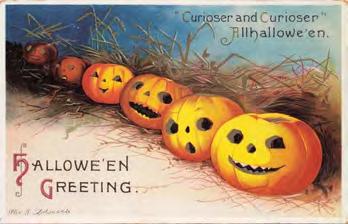
statue of David. The first thing he did, of course, was cut off the top for the lid. But he made the cut straight up and down, so when we tried to fit the lid back on, it fell down in the pumpkin. We had never heard of the toothpick repair back then, so we resigned ourselves to putting the top back on at an angle, which made it look as though he was about to flip his lid.
Mom purchased her first pumpkin from a roadside stand. I’m sure that Dad had never carved one before. He grew up in Virgie in Pike County, where you didn’t bother much with Halloween, except maybe to turn over an outhouse or two. There was no way out of it for him because my sister and I were so excited about Halloween that we had to have our own carved pumpkin. We weren’t allowed to handle knives, so Dad was on the spot. He acted as though there was nothing to it, and in no time, he whipped up a scary jack-o’-lantern that had us shaking in our boots.
When he picked up the knife, we watched as though we were witnessing Michelangelo himself about to chisel his
By Edwin Hall, Kennesaw, Georgia
My grandmother, Vivian Hall, was the Geology Department librarian at the University of Kentucky back in 1970, and I loved to visit her at work when I was about 6 years old. Her library had all kinds of cool rocks of different colors inside glass cases. Some of the cases had buttons I could push; then different colored lights came on inside.
Vivian’s library had a rolling ladder reaching up to the stacks of books. Some of the college students climbed the ladder to reach the higher stacks. This 6-year-old had
Then, Dad cut the eyes—triangle shape, of course. There’s nothing wrong with triangle eyes, except that they always turned out uneven and mismatched, which made him look cross-eyed on one side with the other about to pop out. The nose also was a triangle but was dangerously close to running into one of the eyes. For the mouth, we requested that he “make him with lots of scary teeth!” We ended up being happy he had a mouth at all, because the teeth usually broke off and made him look like he had been punched mercilessly in the face.
We took our finished jack-o’-lantern with the off-kilter lid, uneven crossed eyes, crooked nose and pummeled mouth over to the front steps, ready to have a candle placed inside. At that point, we heard Dad say a couple of his special words as he burnt his fingers trying to light the candle. We stood back and marveled at how spooky it turned out. It was the worst jack-o’-lantern in the free world. I would give a thousand dollars if I could just see it again.
permission from her grandmother to climb the ladder and ride back and forth along the wall of books. I couldn’t wait until I was old enough to go to college and do this every day.
Once when I was visiting Vivian, she said there would be a party for a teacher who was retiring. I was excited about the party, but it turned out to be no big deal. People just stood around and talked and drank punch. There were no party games and no one rode back and forth on the ladder.
Still, it was pretty special to visit my grandmother at the UK Geology Library.
By J.R. Harris, Louisville
In 1977, I worked in the advertising department at Coca-Cola. As part of the Kentucky Derby Festival, there was a Hot Air Balloon Race, and Coca-Cola sponsored of one of the balloons. Our department furnished the personnel to provide the chase truck and workers to get the balloon, called an envelope, and basket spread out so the pilot could turn on the large fan to get hot air into the envelope and full enough to lift off.
The pilot had a radio and two chase trucks to communicate where and when the balloon could land. These pilots were responsible for their safety and that of the team.

Many sponsors who pay for the balloon and crew like to keep them in town to advertise their product or
By Peggy Patterson Mull, Louisville
In the late summer and early fall of the 1940s, when most of the leaves were down in the hills where we lived, my father climbed the hill behind our house and, using a double-bit—also called the double-blade axe—he cut down several trees. They usually were mature trees but not so large that he could not pull them to the house. Depending on how many trees he decided would be needed for the next year, this might involve several weekends of hard work.
After a tree had been cut down, the next step was to chop off the branches, which were utilized as kindling. Then, a heavy-duty log chain was put around the tree about one quarter of the way from the end where he would pull it. I can remember seeing my father strain and bend over in order to pull a tree down the hill to the backyard, where the chopping and sawing took place.
My first job helping to stock the winter wood supply was to cut the branches off the tree. To do that, I learned to use the double-bit axe.
Practice with the axe began in the backyard with a short, uncut log for a prop. Small branches were placed on the log, and I learned to carefully chop each branch off the top log. When proficient at that first chore, I graduated to holding the branch down with one foot and chopping it into smaller, kindling-sized pieces without chopping off
company for at least a week. We used to go to a big shopping area, tether balloons to our truck, and give managers and workers a 15-minute view 125 feet off the ground.
When pilots were not racing for a prize, they could take the crew on short trips. Pilots always carry a bottle of wine or champagne to give to a landowner as a gift if they landed on their property.
Pilots also liked to skim their basket close enough to talk with people on the ground. Once, when I was aboard, the pilot told a man grilling out: “I like my steak medium rare.” Another time, a kid on a bike asked where we were going, and the pilot replied, “We are taking Dorothy back to Kansas.”
It was always fun when the balloon was in town. We went back to our regular jobs knowing our balloon and crew had made people happy.
my foot. There was never an accident.
I carried the small branches down to the yard. Except for the leaves that were left behind, nothing of the tree was wasted.
Once the tree was in the yard, we used the crosscut saw. The log was placed horizontally between two sawhorses. One person stood on each side of the log and pushed or pulled opposite the other person to cut the log into usable lengths for the fireplace or stove.
We had to be careful not to bend the saw, or it would “bind,” and that could damage or break it. For a 7- or 8-year-old, I got pretty good at sawing and actually found it enjoyable. A 16-foot-tall tree had to be cut into four 4-foot-long lengths. This meant that we had to reposition the sawhorses several times to cut into stove- or fireplacesize lengths.
Once the logs were cut into the proper lengths, each was stood on end, and a double-bit axe was used to split it vertically into smaller slices. This was another phase of log cutting that I mastered.
The finished firewood was stacked against the house in a pile about 4 feet high by 6 feet wide, with the kindling in a pile next to it. When winter was blowing, all we had to do was step outside for kindling and firewood.
I never knew how my father could judge how many trees to cut for winter, but I don’t remember ever running out of fuel.

By Heather Grothaus, Walton
Entrepreneur Abner Legrand Gaines built his namesake mansion in 1814 in what is now Boone County in Northern Kentucky. It became an anchor to the then-fledgling town of Walton.
The walls of the Federal-style house are four bricks thick, with the bricks produced onsite from the clay of the original 200-acre estate. The 12-room house became the main tavern and inn after the late-1700s era log structure burned.
Gaines was responsible for bringing the stagecoach line through the area. In the early 1800s, the stagecoach left Cincinnati at 8 a.m. on Monday morning and arrived in Lexington at 2 p.m. on Tuesday. The Inn at Gaines Crossroads, approximately 20 miles from Cincinnati, was the perfect place for travelers and stagecoach drivers to sleep and refresh themselves and for the travel-weary horses to eat and rest.
Gaines and his wife, Elizabeth, raised their 13 children at the inn. The prominent family had political ties: Abner was one of first sheriffs of Boone County, and later, his son, John P. Gaines, was appointed governor of the Oregon Territory. Abner’s eldest son, James
Matthews Gaines, became the first postmaster for the community then referred to as Gaines Cross Roads.
In its more than 200-year history, the Gaines House has seen its share of tragedy involving not only the Gaines family but guests and patrons. Eleven deaths have been confirmed to have occurred on the property, including those by natural causes, suicide and even murder. The remains of a lost cemetery and the location of the county hanging tree are thought to be in the woods nearby.
The Gaines House was purchased by the City of Walton in 2006. Prior to that, it was a private residence with award-winning renovations that preserved its historic significance. It has been on the National Historic Register since 1980. Today, visitors enjoy the tall-ceilinged rooms filled with locally sourced antiques. The home also boasts original woodwork and mantels, three staircases and nine fireplaces.
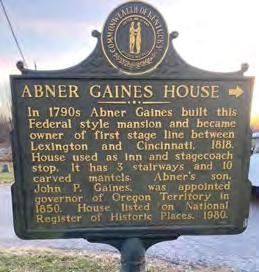
The Abner Gaines House is open every second Sunday, June through October, 2-4 p.m., plus special event dates throughout the year. For more information, visit The Gaines Tavern History Center/Abner Gaines House on Facebook or contact Gaines House event coordinator Paula Jolley at events@cityofwalton.org or Walton City Hall at 859.485.4383
At the start of the 1900s, electricity was still a novelty for much of Kentucky. While Louisville and Lexington saw the introduction of electric power in the late 1800s, many rural areas remained reliant on oil lamps and candles.
Kentucky Utilities began in 1912 and aimed to bring together smaller local utilities under one organization, with its headquarters in Lexington. The company expanded at a rapid pace, buying properties in Versailles, Lawrenceburg, Somerset, Elizabethtown, Shelbyville, Winchester and Mount Sterling. In just one year, KU had more than 4,000 customers. The utility company taught people the benefits of electricity by demonstrating new appliances and wiring residences with electric lights. Within five years, 51 communities were being served by KU.
In 1917, KU moved to Louisville and acquired the Kentucky Light and Power Company. Over the next two years, more than 20 coal mines were connected to the KU system, and the energy used in those coal mines accounted for almost two-thirds of KU’s business.
The company’s network expanded further throughout the 1920s and ’30s, extending service to more communities and adding generating stations in places such as Pineville and Paris. With the establishment of the Rural Electrification Administration in 1935, federal assistance accelerated the spread of electricity to remote and
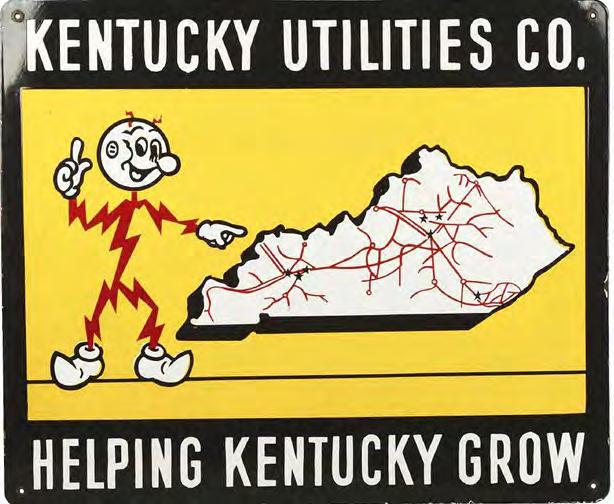
underserved parts of Kentucky.
By the late 1940s, Kentucky Utilities had become a major provider, supplying electricity to a growing number of homes, industries and mining operations throughout the Commonwealth.
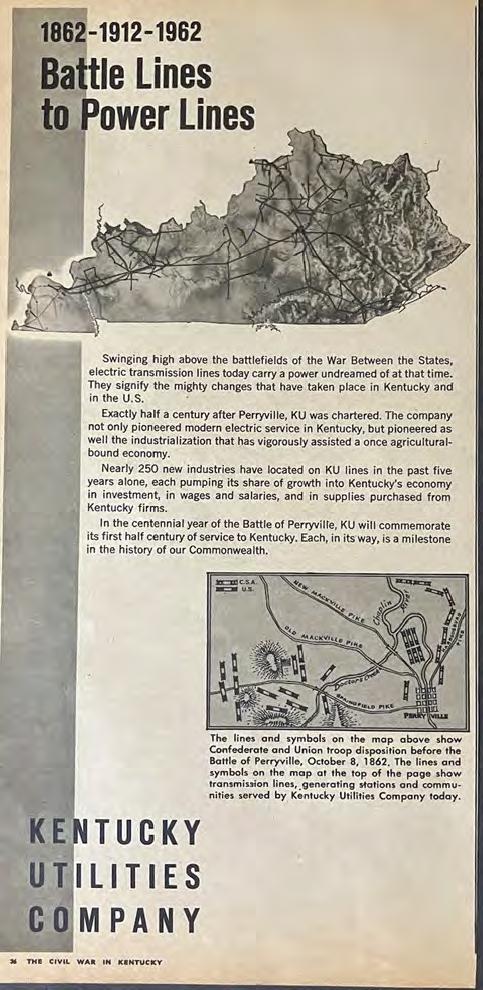
By John Mitchell Johnson, Lexington
“
Whrrt, haw!” Uncle Marcus yells, spurring on his old mule Jet, who is tethered to the cane press by a long poplar pole. As with Sisyphus, Jet’s labor is never-ending. He plods a continuous circle, turning the grinding gears that gobble up the reedy stalks of sweet sorghum cane and render a fresh, foamy green juice that is collected in well-worn galvanized buckets. The juice is then poured into massive iron pots and heated over open wood fires. Once the juice commences to boil, the stirrers—womenfolk, their heads tied up with tattered kerchiefs—continually swirl the bubbling liquid with long wooden paddles, taking care to skim off any impurities that rise to the top.
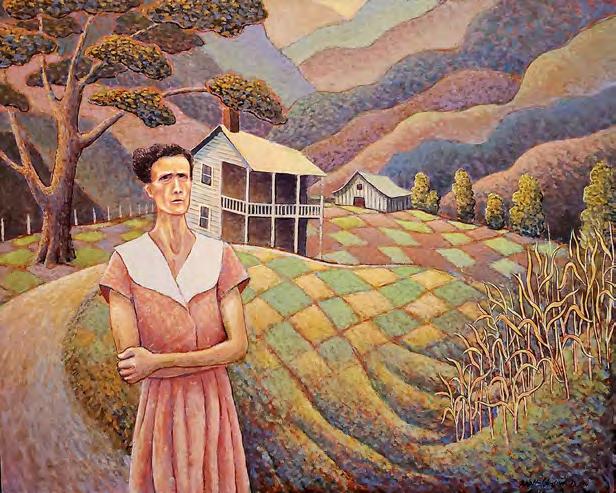
Long and lanky, with a shock of white hair and clad in his trademark bib overalls, Uncle Marcus, much like Jet, makes a continuous circuit—from the men cutting the cane in the field, to those feeding the mill, and ultimately to the stirrers as they swelter in the pungent steam roiling from the seething cauldrons. The sorghum isn’t ready until Uncle Marcus says it’s ready. He adroitly judges its color, thickness, aroma and the way it clings to the paddle. Once the dark amber extract meets his approval, it is bottled in Mason jars and sold to the many eager buyers who are gathered at his farm at the mouth of Hollybush, a holler just a few miles from Pippa Passes in Knott County.
I have a vivid childhood memory that resurfaces every autumn just as the last of the crimson maple leaves swirl groundward, and the azure autumn sky casts its lengthening shadows. It is that time of year that the cane ripens, its showy tassels swaying in the cool fall breeze, their tendrils boasting a tawny purple. My father loaded us into his pickup, Mom and my sister squeezed inside the cab with him, while my brother and I bounced along in the bed. Together, we’d make our way from Mousie in Knott County over Caney Mountain to Uncle Marcus’ farm for the much-anticipated yearly stir-off. Cars and trucks were lined along the one-lane road for a mile or more.
The stir-off spanned several days, until the last reeds of cane were harvested. People of all ages gathered to share food and swap stories, and they’d leave with a few quarts of the much sought-after treacle. Often, just as the sun was setting over the mountain, Cousin Warren broke out his fiddle, and Uncle Marcus entertained by buck-dancing on a wooden platform to the tinny strains of “Cricket on the Hearth” or “The Irish Washerwoman.” We kids played tag or hide-and-seek in the newly harvested fields, and the menfolk sipped store-bought liquor from half-pint bottles cloaked in brown paper sacks. Many a young boy stole his first kiss cuddled up behind a sycamore tree.
In those days, I guess you would consider my family one of relative affluence, a dubious distinction given that we lived in one of the poorest counties in Eastern Kentucky. President Lyndon B. Johnson’s War on Poverty was slow reaching our little holler, but both of my parents had jobs. My mother was a schoolteacher, and my father a bluecollar worker. Our clothes were used and came from a Save the Children Federation outlet operated out of Ida Rice’s basement. Save the Children Federation was too much of a mouthful, so we just called it “Idie’s Store.” Our “new clothes,” which reeked of mothballs, were sold by the pound and bundled in brown paper tied with twine.
We were afforded the luxury of running a monthly credit at Campbell’s Grocery, and on paydays, when Dad settled our bill, Mr. Campbell rewarded him with a halfgallon of ice cream. This was a courtesy in return for being a loyal customer and keeping his account current. It was a
savored extravagance. On those nights, each of us got a heaping bowl of the frozen treat smothered in Mom’s homemade gooey chocolate sauce.
We also had a hired girl, a slightly built buzz saw of a woman. Her name was spelled D-E-L-T-A and pronounced Delty. Delty, who never married, devoted more than 20 years to our family. More than hired help, she ran the household and was a surrogate parent to us kids, especially over that dark winter of 1964 when my 42-year-old father lay dying in a hospital some 150 miles away, our mother at his side. After Dad’s death, Mom and Delty sometimes jockeyed for position, but Mom—a formidably strong woman—gently but firmly asserted her authority. Though there were hurt feelings from time to time on both sides, their mutual respect and admiration sustained a lifelong friendship.
Delty had little formal education, having completed only the third grade. At 9, she was forced by her mother to quit school and help run the family homestead, a resentment that Delty carried throughout her life. Delty could only read and write at a rudimentary level, but she was one of the most resourceful people I have ever known. She was an artisan who created beautiful hand-stitched quilts and colorful afghans. She crocheted intricate doilies and booties and sock caps, and she could sew most any garment, with or without a pattern. Delty gardened, and she was the embodiment of country cooking. She could put a Sundayworthy spread out with the greatest of ease and economy. Delty was a Renaissance woman.
One of Delty’s specialties was her gingerbread. Appalachian-style gingerbread is a unique confection, neither cookie nor cake, not too moist nor too dry, not so gingery that it overpowers the palate but far from bland. Gingerbread bakers had their own closely guarded recipes, and though the ingredients and proportions varied somewhat, the universal component was sorghum. Conveniently, stir-off season was in mid-October, just before election day. It was tradition for local gingerbread makers to, for a fee, hand out gingerbread at the polls while electioneering for their sponsoring candidate. Delty was much sought-after in this regard, and after coming to a suitable financial arrangement with an aspiring office holder, she baked batch after batch of gingerbread, individually wrapping each piece in milky wax paper. On election day morning, she and other bakers stationed themselves along the queue of voters and distributed their gingerbread along with the calling card of the candidate they supported.
The extra money Delty made from her election gingerbread was nice, but the real prize was bragging
rights for being known as the best gingerbread baker in the county. By the mid-1970s, the aproned bakers regrettably had been replaced by hollow-eyed, out-of-work coal miners, surreptitiously handing out half-pints of cheap liquor, and election gingerbread had all but gone by the wayside.
After caring for our family for nearly a quarter-century, Delty returned home to look after her aging parents. Unbeknownst to anyone, my mother had been paying both the employee and employer portion into Delty’s Social Security for all the years she had been with us, something unheard of in those days, thus affording Delty a relatively comfortable retirement.
Over the ensuing years, my siblings and my mother and I all left the mountains, but we kept in touch with Delty. Mom never failed to send her a note with a check enclosed on her birthday and at Christmas, and in turn, every Christmas, we got a big parcel from Delty with a newsy letter, which had been transcribed by her niece. The parcel also contained crocheted tree ornaments and a bundle of gingerbread for each of us, neatly wrapped and tied with red-and-green ribbon.
It usually happens that you don’t realize that something was the last time until after it was the last time. Such was the case the year that Christmas came and went without a package from Delty. Sadly, dementia—the cruel usurper of cognition—deprived Delty of her former vibrance, and she lived out her days confined to a nursing home.
A few years ago, I was going through a box of whatnots that I had taken from our homeplace when Mother sold the house. There were a few old pictures, a tattered copy of Walt Whitman’s Leaves of Grass, a few of Delty’s dress patterns, and there in the bottom, scrawled on a piece of brown paper in Delty’s labored pen, was her gingerbread recipe. Though scant on details, the essentials were there, and after a few trials, I’ve gotten pretty close to replicating her signature treat.
To borrow from Loretta Lynn, “a lot of things have changed since a way back then,” but every fall, in deference to Delty, I make a few batches of gingerbread. My sorghum now arrives via Amazon from “Something or Other Farms,” which is probably a commercial kitchen in an industrial complex somewhere. And though it falls short of the robust flavor and faint hint of scorch characteristic of Uncle Marcus’ sorghum, it suffices.
It’s just me and my sister now. Gone are Dad, Mom, my brother and Delty. My annual making of Delty’s gingerbread is an evocative ritual: a small act but a profoundly personal and significant acknowledgment of a heritage for which I am deeply grateful.
Gov. Bert T. Combs played a pivotal role in the establishment of Kentucky Educational Television (KET). The idea for a statewide educational broadcaster was conceived in 1959 by O. Leonard Press, the director of the radio department at the University of Kentucky. Combs, recognizing the potential of this initiative, took a keen interest and conducted thorough research on the prospect.
In 1962, during his commencement address at the Oneida Baptist Institute in Clay County (the school he attended in the mid-1920s for seventh and eighth grade), Combs announced the establishment of KET. This announcement marked a significant milestone. The same year, the Kentucky General Assembly passed a bill to set up the Kentucky Authority for Educational Television, enabling the State Board of Education to lease facilities
and the state to issue revenue bonds to finance construction.
In the address, Combs emphasized the importance of KET, stating, “This is another long step forward in our program to provide the best education opportunities for Kentucky citizens. It will be utilized not only by the public schools but by our colleges and in our program of adult education and job training.”
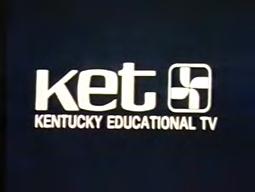
He also highlighted that educational television supplemented teaching methods but would not replace teachers.
The first step in establishing KET was to acquire 10 transmitter sites strategically placed to ensure statewide coverage.
The transmitter sites are located in Ashland, Bowling Green, Elizabethtown, Hazard, Lexington, Louisville, Madisonville, Morehead, Murray and Somerset KET signed on the air for the first time on Sept. 23, 1968.

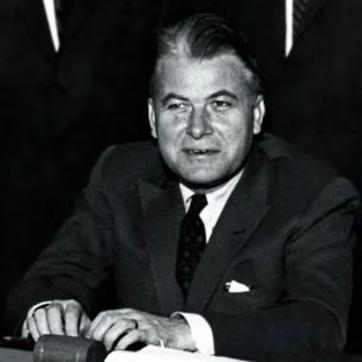
filming in progress in the early days of KET;
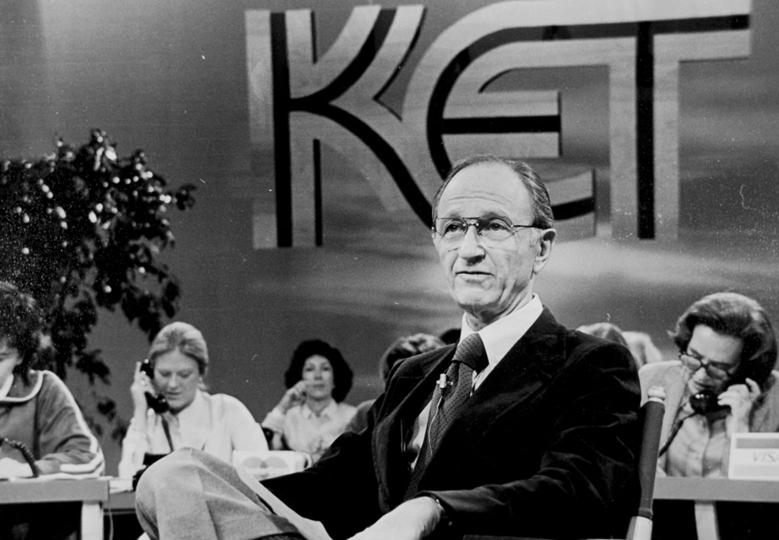
The Lexington Street Railway Company introduced mule-drawn streetcars to the city’s public transportation landscape. In the spring of 1882, city and state legislative bodies granted the founders of the Lexington City Rail Company—E.L. Woodridge, Alex Pierson, E.R. Hutchcraft, J.H. Hobson and J.E. Keller—the ability to construct and operate horse-drawn streetcars throughout downtown. The company laid track throughout the summer, and on Aug. 12, the first trip along the Green Line was completed. The 3.25-mile trip took passengers from the downtown courthouse square toward Race Street and the Association Track in Lexington’s east end. The company’s barn was adjacent to the Association Track at Fourth and Race Streets.
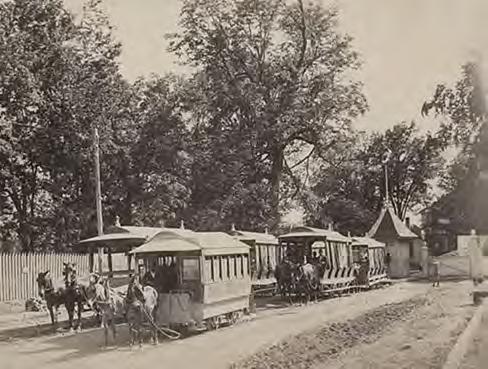
The Lexington City Rail Company eventually operated 11 wooden cars and maintained a stable of 40 mules. Eleven drivers moved passengers throughout the city, though the services were limited and steeper areas of the city were difficult to traverse. According to one Lexington historian, men were encouraged to disembark at the bottom of steep hills and walk to the top before reboarding. The city replaced the mule-drawn streetcars with electric street cars in 1890.
Courtesy of Lexington History Museum, lexhistory.org
Lincoln Days Celebration in Hodgenville, Oct. 4-6. For information, call 270.358.8710 or visit lincolndays. org.
The Smithsonian’s Museum on Main Street Exhibit at the Muhlenberg County Public Library in Greenville, Oct. 4-Nov. 15. The traveling exhibit will be in several Kentucky museums through July 5, 2026. For more information, call 859.257.5932 or visit kyhumanities.org.
Jazz at The Filson: The Great Gatsby Era at The Filson Historical Society in Louisville, Oct. 12. Step back in time and experience the magic of the Jazz Age. For more information, visit filsonhistorical.org.
101 Series Presents Kentucky Haunts at the McCracken County Public Library in Paducah, Oct. 23. Free. For more information, call 270.442.2510 or visit mclib.net.
Victorian Mourning – Peculiar Tour at Waveland State Historic Site in Lexington, Oct. 24. For more information, call 859.272.3611 or visit parks.ky.gov.
Reach 120,000 readers a classified ad in Kentucky Explorer! Classified ads are only $50 per issue (up to 25 words). Contact Deborah Kohl Kremer at deb@kentuckymonthly.com or call 888.329.0053.
BOOK FOR SALE —
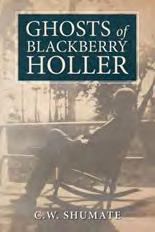
Highlighting rural Kentucky events from 1865, this adventurous story by C.W. Shumate waited 160 years to be shared. The Butler Books novel is available at www.cwshumate.com. (M-D)
BOOK FOR SALE —
George Graham Vest: The Life and Times of Dog’s Best Friend chronicles the life and career of Frankfort native, jurist and legislator George Graham Vest. The book is by Stephen M. Vest, a cousin, who is known for his command of the English language. $26.95 plus shipping. To purchase, call 888.329.0053 or visit shopkentuckymonthly.com
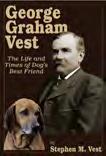
ANTIQUES & VINTAGE MARKET
Lawrenceburg Fairgrounds, 351 E Eads Pkwy., Lawrenceburg, Indiana. The first Sunday of the month MayOct, next show Oct. 5, 2025, 6 am-3 pm. Over 200 dealers. 513.702.2680, lawrenceburgantiqueshow.com. (M-O)
WANTED Paying cash for large diamonds; collections of vintage wrist and pocket watches; gold and silver coins; sterling flatware and serving pieces; gold and silver jewelry; collections of arts and crafts and pottery; antique advertising signs; antique walking canes; pocket knives; collections of antique guns and swords; military collections; early hand-crafted crocks and jugs; musical instruments; call Clarence, buyer for more than 35 years; 606.531 0467. (F-D)
KENTUCKY ANTIQUE TRAIL — Trail brochures/maps are in Kentucky state welcome centers and member stores. Visit KentuckyAntiqueTrail.com. Contact info@AntiqueTrail.com or call 256.797.5640.
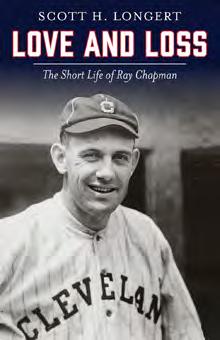
Kentucky-born Ray Chapman had it all—a bride from one of Cleveland’s elite families with a baby on the way, a successful baseball career with an executive position waiting for him after his playing days, a loving family and close personal friends. One pitch changed it all.
On Aug. 16, 1920, Chapman, the shortstop for the Cleveland Indians, was struck in the head by a pitch from Casey County native Carl Mays of the New York Yankees. Chapman died the next day.
Scott H. Longert tells Chapman’s life story, starting with his birth in Ohio County and his modest upbringing in Kentucky and Illinois. Longert describes Chapman as friendly and outgoing but also intensively competitive. As a player, Chapman was a solid hitter and a dazzling (if occasionally erratic) fielder who was regarded as one of the fastest baserunners in the majors.
Longert drew from books, articles and family memories to write a comprehensive and affectionate biography.
By Ted Sloan
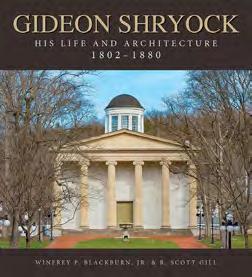
It has been said that structures built to protect humans evolved into a “powerful and sophisticated vehicle of messaging and symbolism: they became architecture.”
Lexington-born Gideon Shryock did his part in the 1800s to advance the field of architecture and achieve what he called a “pleasing effect.”
Authors Winfrey Blackburn Jr. and R. Scott Gill collaborated on the beautiful coffee table book Gideon Shryock: His Life and Architecture 1802-1880. Readers are presented interesting information about Shryock’s life, along with pictures and blueprints of his buildings.
Born in 1802, Shryock was the architect for such Kentucky structures as the Kentucky Statehouse, Transylvania University’s Morrison Building and the Louisville Medical Institute. Near the end of his career, Shryock became the first president of the Kentucky Association of Architects. Blackburn practices law in Louisville, and Gill teaches architectural history and practices real estate in Austin, Texas.
By Steve Flairty
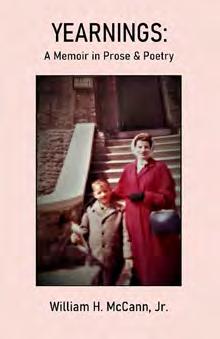
In the early 1960s, before regulated special education programs existed in Kentucky, 6-year-old Bill McCann of Lexington had difficulty learning. In those days, he related, “families were responsible for providing an education for their differently abled children, at their own expense.” His parents had the resources, and because of that, he was sent to The Cove School, a residential school in Racine, Wisconsin.
In his new book about his childhood, Yearnings: A Memoir in Prose & Poetry, McCann shares his experiences at The Cove. McCann, who now lives in Winchester, writes using Japanese-style poetry to paint a picture of life during his residential school years. He includes historical, medical and educational records, plus letters home and family photographs that tell his inspiring story.
Aside from writing poetry, McCann is a playwright, flashfiction writer and essayist, and he is a member of the Dramatists Guild. Among other degrees, he holds an MFA from Eastern Kentucky University.
By Steve Flairty

Harlan Hubbard’s worldview might well be summarized by one of his musings: “What we need is at hand.” What was at hand for Hubbard was at Payne Hollow (Trimble County), where he and his wife, Anna, removed themselves from a world of conventionality, setting their own rules. Hubbard, they say, reigned there as “Kentucky’s Thoreau.”
In her Driftwood: The Life of Harlan Hubbard, Jessica Whitehead uncovers the Northern Kentucky writer, artist and naturalist’s family background, his education and his significant relationships, especially those with his mother and Anna, who added polish to Harlan’s otherworldly lifestyle but was the perfect partner for it.
Hubbard’s voluminous journal writings provided excellent research material, and Whitehead shares a generous sampling of his paintings.
Whitehead is a writer and curator of collections at the Kentucky Derby Museum and has co-authored and contributed to two other books.
By Steve Flairty
Driftwood:
For more on Harlan Hubbard, see page 56

Kentucky Bookstore at Tastefully Kentucky
Broadway Books
1537 Winchester Avenue, Ashland broadwaybooksaky.com
606.694.7100
Carmichael’s Bookstore
1295 Bardstown Road, Louisville 1313 Bardstown Road, Louisville 2720 Frankfort Avenue, Louisville carmichaelsbookstore.com
502.456.6950
CoffeeTree Books
159 East Main Street, Morehead coffeetreebooks.com
606.784.9877
From the Ground Up
205 E Main Street, La Grange 160 Frank E Simon Ave, Shepherdsville fromthegroundupbooks.com
502.531.0032
Kentucky Soaps and Such
203 West Main Street, Stanford kentuckysoapsandsuch.com
606.365.0808
Main Street Books
21 North Main Street, Monticello msbmonticello.com
606.753.6125
Plaid Elephant Books
116 North Third Street, Danville plaidelephantbooks.com
859.449.2010
Poor Richard’s Books
233 West Broadway, Frankfort poorrichardsbooksky.indielite.org
502.223.8018
Read Spotted Newt 221 Memorial Drive, Hazard readspottednewt.com
606.373.4811
Roebling Pointe
Books & Coffee
306 Greenup Street, Covington 301 Sixth Avenue, Dayton 601 Overton Street, Newport roeblingbooks.com
859.240.9476
The Shire Bookstore
115 Newman Drive, Eddyville shirebookstore.square.site 254.245.0439
The Kentucky Bookstore at Tastefully Kentucky 126 S Main St, Lawrenceburg tastefullydeliciousky.com
502.598.3131
BY BILL ELLIS
We’re coming up on the annual Kentucky Book Festival in Lexington (see page 33) and other book events leading to the holiday season.
When I was teaching and doing research in my days at Eastern Kentucky University, I read mostly history books, journal articles and biographies. I enjoyed researching papers in archives, but that was long ago. In retirement, I’ve read a lot of English mysteries, particularly ones by P.D. James (over 30), Agatha Christie and Ellis Peters They are the greatest. I have read over 20 mysteries written by Donna Leon about Commissario Guido Brunetti of the Venice police. Throw in novels by Nadine Gordimer, Jo Nesbø, Carl Hiaasen, Walter Mosley, Celia Dale, Elmore Leonard, Craig Johnson and a few others. If you have not read Gordimer, put her on your reading list.
My assignment for this issue of Kentucky Monthly was to write about Driftwood: The Life of Harlan Hubbard by Jessica K. Whitehead
Who has not dreamed the dream of Harlan Hubbard to live independent of modern life as much as possible? The cover of Whitehead’s biography of Hubbard shows a youngish Hubbard naked to the waist and barefoot, rowing a handmade johnboat. A lean man, he stares into the camera, full of character.
Born in 1900 in Bellevue, Hubbard enjoyed a privileged Northern Kentucky upbringing. His two older brothers also were talented. Lucien became a successful Hollywood screenwriter and director, while Frank became an important illustrator and artist. Young Harlan studied art in Cincinnati and lived with his mother, Rose, in New York City, where he also studied art for a while before traveling to the West Coast. Harlan not only painted, he also worked as a manual laborer, becoming a jack-of-alltrades. He loved the Ohio River as few men could, developing and building canoes and boats. He was never a recluse and was gregarious in his own way.
While his older siblings left for growing careers, Harlan stayed with his widowed mother until her death in late 1943. He was in his early 40s when he began a romance with Anna Wonder Eikenhout, a librarian at the Cincinnati Public Library and an artist and musician.
If ever there was a match made in heaven, the romance and marriage of Harlan and Anna is the prime example. Characteristically, after their marriage in Maysville, “they took a 4-mile hike along a railroad track.”
They began their lives together with a wanderlust. They floated down the Ohio and Mississippi rivers into bayou country on a multi-year voyage that resulted in Hubbard’s first book, Shantyboat: A River Way of Life , published in 1953.
They eventually settled on a hillside on the Ohio River in Trimble County on 7 acres named Payne Hollow. There, Harlan and Anna built their home using local materials. With driftwood, timber, stone, and nails and hammer, Harlan and Anna built the home of their dreams, even having a local man with a tractor deliver Anna’s beloved Steinway grand piano.
They worked hard, raised a large garden, ate off the land—even the occasional groundhog—and eventually added a pen of goats. They had no electricity and depended on Harlan’s handmade cistern for water. They had only a woodstove for heat and cooking yet ate off a fine tablecloth and china. Anna was the better musician of the duo, as Harlan played away on his violin. They read books together, including those of Emerson and Thoreau
Friends far and wide—including Wendell Berry and other writers and artists—visited often. The door was always open, for school children as well as grownups.
Harlan wrote in his journals: “There is but one great man. That is he who makes a masterpiece of his life. No accomplishment can offset bad living.”
Anna died in 1986, Harlan two years later.
Whitehead’s biography is a labor of love not only of Harlan but also Anna. Anna comes off as perhaps an even greater hero, living a hard but enjoyable life with the man she loved.
Harlan was one of a kind. Not many people can live or have lived the life he did. He was able, with his talents, to live a hard, fruitful, happy life.
The book includes several pages of Hubbard’s artworks. Don’t miss it.
Note: On March 10, the Lexington Herald-Leader ran a cover story, “A Beloved Home Repaired” by Karla Ward, describing the efforts to rebuild and preserve Payne Hollow. It includes several pictures of Harlan and Anna and their beloved land. For more on Driftwood: The Life of Harlan Hubbard, see page 55. Readers



BY GARY GARTH
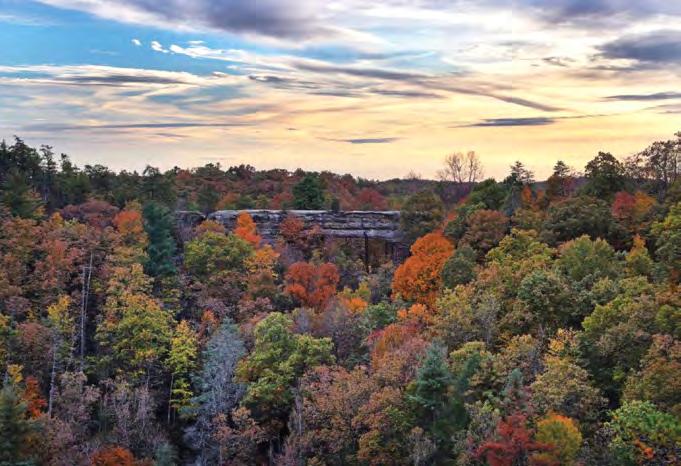
There are many things to love about being outdoors in October, including, but not limited to:
n Humidity-free weather
n Early muzzleloader deer season (open Oct. 18-19)
n Shallow-water bass
n Crisp, cool mornings
n Archery deer season (open through Jan. 19)
n Trout catch-and-release season (open through March 31 on 14 streams)
n Crossbow deer season (open through Jan. 19)
n Crossbow turkey season (open Oct. 1-16)
n Firearm fall turkey season (open Oct. 25-31)
n Squirrel season (open through Feb. 28, except Nov. 8-9)
And, of course, surrounding all of it, the rainbow-like scenery.
October is fall-foliage time in Kentucky and beyond. Wherever deciduous trees grow, the landscape is—or soon will be—melting into an array of yellows, golds, purples, bronzes, scarlets, crimsons and endless combinations.
It is one of nature’s wonders, this changing of leaf colors that returns mysteriously each fall almost as if by magic. The forest is green. Then it’s a dazzling kaleidoscope of colors. Then it’s stark and leafless—a seasonal rotation that usually lasts a few weeks but occasionally only spans a few days.
Of course, there is nothing magical or mysterious about it. It’s the wonder of science.
The process is complicated and inexact, but three factors drive and largely determine the fall foliage display: pigments held within the leaves, the daily amount of sunlight, and the weather.
Three pigments are involved: chlorophyll, carotenoids and anthocyanins.
Many of the woodland colors you will soon see in the woods, parks and
your backyard have been part of the leaves all year thanks to carotenoids, a pigment that’s dominated by yellows and reds. However, for most of the growing season carotenoid is masked by another pigment, chlorophyll, which—during the spring and summer growing season—is continually produced. The chlorophyll production results in green leaves.
This begins to change when fall arrives and with it the two factors necessary to weaken and ultimately eliminate chlorophyll production: less sunlight and cooling temperatures.
As the hours of sunlight lessen, a plant’s production of chlorophyll slows and then stops. The colorful carotenoids, which have been part of the leaf since spring, and the anthocyanins, which primarily are produced in the fall as sugars are trapped within the leaf structure and are mostly revealed as reds, purples and crimson, appear as the chlorophyll fades.
Weather also is a factor. Drought or an overly wet growing season will affect what you will see this month, although a wet spring is best for fall colors. Current conditions play a role, too. Ideal fall color conditions are warm, sunny days and cool, crisp nights, which primarily aid in the production of anthocyanins and the resulting tints of reds, purples and crimson. Since carotenoid pigments are always part of the leaf system, those colors are generally constant throughout the season.
• • •
Kentucky typically enjoys a colorful fall, and you won’t have to look far to find it. But some areas sure to please include the Bernheim Arboretum and Forest, Red River Gorge, Daniel Boone National Forest,
Land Between the Lakes National Recreation Area and Big South Fork National River and Recreation Area.
It is unknown how many people travel to view these wonders, although “leaf peeping” is widely popular.
When to catch the color peak can be tricky, as fall foliage does not adhere to a calendar, and it is impossible to predict with precision. In Kentucky, the color change generally is revealed earlier in the Eastern highlands due to the elevation and gradually moves westward. But not always. Part of the fun is guessing when peak colors will arrive.
With rare exceptions, October is the peak color month for Kentucky. Often mid- to late month is the prime time, but specifics are unknown and unknowable. Keep a close lookout.
The folks at Kentucky Tourism often help with foliage updates. Check out its website at kentuckytourism.com
• • •
Kentucky’s archery and crossbow deer seasons are open. The youthonly gun hunt is Oct. 11-19, and the early muzzleloader season is Oct. 18-19. Modern gun season is Nov. 8-23. Bag limits vary by zones. Check the current hunting guide or visit fw.ky.gov for details.
The state’s chronic wasting disease surveillance zone now includes 14 counties: Ballard, Breckinridge, Calloway, Carlisle, Fulton, Graves, Hardin, Henderson, Hickman, Marshall, McCracken, Meade, Union and Webster. Special regulations apply. Details can be found at fw.ky. gov/Wildlife/Pages/CWDSurveillanceZone.aspx.
Readers may contact Gary Garth at editor@kentuckymonthly.com
SUBMIT AT KENTUCKYMONTHLY.COM
We are seeking submissions for the literary section in our February 2026 issue.
kentucky monthly ’s annual writers’ showcase Categories: POETRY
FICTION
CREATIVE NONFICTION LIMERICKS
SUBMISSION DEADLINE: December 5, 2025
STATEMENT OF OWENERSHIP, MANAGEMENT & CIRCULATION: 1) Publication Title: Kentucky Monthly, 2) Publication No.: 1542-0507, 3) Filing Date: Oct. 1, 2025, 4) Issue Frequency: 10 times per year (monthly), 5) No. of Issues Published Annually: 10, 6) Annual Subscription Price: $25, 7-8) Complete Mailing Address of Known Office of Publication & Address of Headquarters: 100 Consumer Lane, Frankfort, KY 40601, 9) Full Name & Complete Mailing Address of Publisher, Editor & Managing Editor: Stephen M. Vest, 100 Consumer Lane, Frankfort, KY 40601, 10) Owner: Vested Interest Publications, Inc., 100 Consumer Lane, Frankfort, KY 40601. Shareholders owning at least 1%: Barbara K. & Stephen M. Vest, 1001 Silver Creek Drive, Frankfort, KY 40601; Michael & Mary Embry, 152 Skyview Drive, Frankfort, KY 40601; Mary Jo Ratliff, PO Box 1347, Pikeville, KY 41502; Jack E. Dixon, 6114 Franklin Villas Way, Indianapolis, IN 46237; Judy Harris, 1713 Parkridge Parkway, Louisville, KY 40214; Ted Sloan, 1067 Macland Street, Lawrenceburg, KY 40342; Walter Norris, 418 Northridge Drive, Lexington, KY 40505; Kendall Shelton, 204 Denison Way, Frankfort, KY 40601; Barbara Ann Chiericozzi, 7114 Topsail Court, Tega Cay, SC 29708; 11) Known Bondholders, Mortgagees & Other Security Holders Owning or Holding 1% or More of Total Amount of Bonds, Mortgages or Other Securities: First Federal, 216 West Main Street, Frankfort, KY 40601, 12) For completion by nonprofit organizations or other securities: not applicable, 13) Publication Title: Kentucky Monthly, 14) Issue Date for Circulation Data: September 2025, 15A) Total No. of Copies. Avg. No. of Copies Each Issue during Preceding 12 Mos.: 25,606. No. of Single Issues Published Nearest to Filing Date: 25,024, 15B) 1) Mailed Outside-County Paid Subscriptions Stated on PS Form 3541. Avg. No. of Copies Each Issue during Preceding 12 Mos.: 15,810. No. of Single Issues Published Nearest to Filing Date: 16,024. 2) Mailed In-County Paid Subscriptions Stated on PS Form 3541: Avg. No. of Copies Each Issue during Preceding 12 Mos.: 0. No. of Single Issues Published Nearest to Filing Date: 0. 3) Paid Distribution Outside the Mails Including Sales Through Dealers & Carriers, Street Vendors, Counter Sales & Other Paid Distribution Outside USPS: 0. Avg. No. of Copies Each Issue during Preceding 12 Mos.: 0. No. of Single Issues Published Nearest to Filing Date: 0. 4) Paid Distribution by Other Classes of Mail Through USPS: Avg. No. of Copies Each Issue during Preceding 12 Mos.: 0. No. of Single Issues Published Nearest to Filing Date: 0. 15C) Total Paid Distribution: Avg. No. of Copies Each Issue during Preceding 12 Mos.: 15,819. No. of Single Issues Published Nearest to Filing Date: 16,024. 15D) 1) Free or Nominal Rate Outside-County Copies Included on PS Form 3541: Avg. No. of Copies Each Issue during Preceding 12 Mos.: 4,652. No. of Single Issues Published Nearest to Filing Date: 3,687. 2) Free or Nominal Rate In-County Copies Included on PS Form 3541: Avg. No. of Copies Each Issue during Preceding 12 Mos.: 0. No. of Single Issues Published Nearest to Filing Date: 0. 3) Free or Nominal Rate Copies Mailed at Other Classes Through the USPS: Avg. No. of Copies Each Issue during Preceding 12 Mos.: 0. No. of Single Issues Published Nearest to Filing Date: 0. 4) Free or Nominal Rate Distribution Outside the Mail: Avg. No. of Copies Each Issue during Preceding 12 Mos.: 4,560. No. of Single Issues Published Nearest to Filing Date: 4,738. 15E) Total Free or Nominal Rate Distribution: Avg. No. of Copies Each Issue during Preceding 12 Mos.: 9,212. No. of Single Issues Published Nearest to Filing Date: 8,425. 15F) Total Distribution: Avg. No. of Copies Each Issue during Preceding 12 Mos.: 25,031. No. of Single Issues Published Nearest to Filing Date: 24,449. 15G) Copies Not Distributed: Avg. No. of Copies Each Issue during Preceding 12 Mos.: 575. No. of Single Issues Published Nearest to Filing Date: 575. 15H) Total: Avg. No. of Copies Each Issue during Preceding 12 Mos.: 25,606. No. of Single Issues Published Nearest to Filing Date: 25,024. 15I) Percent Paid: Avg. No. of Copies Each Issue during Preceding 12 Mos.: 63.19%. No. of Single Issues Published Nearest to Filing Date: 65.54%. 16A) Paid Electronic Copies: Avg. No. of Copies Each Issue during Preceding 12 Mos.: 0. No. of Single Issues Published Nearest to Filing Date: 0. 16B) Total Paid Print Copies + Paid Electronic Copies: Avg. No. of Copies Each Issue during Preceding 12 Mos.: 15,819. No. of Single Issues Published Nearest to Filing Date: 16,024. 16C) Total Print Distribution + Paid Electronic Copies: Avg. No. of Copies Each Issue during Preceding 12 Mos.: 25,031. No. of Single Issues Published Nearest to Filing Date: 24,449. 16D) Percent Paid: Avg. No. of Copies Each Issue during Preceding 12 Mos.: 63.19%. No. of Single Issues Published Nearest to Filing Date: 65.54%. I certify that statements made above are correct & complete. Barbara Kay Vest, Business Manager.
BY WALT REICHERT
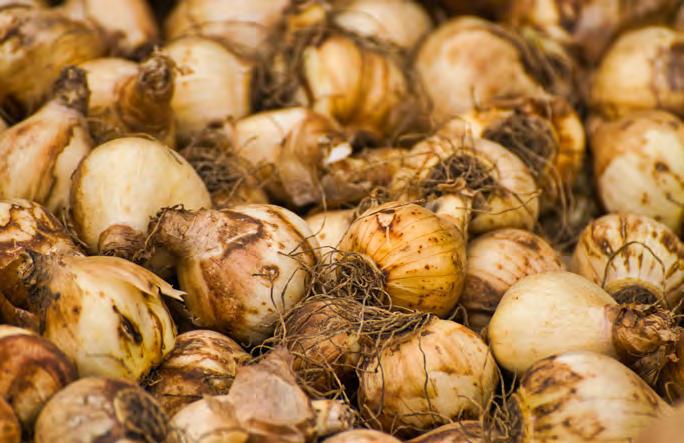
Ihave a hard time planning what’s going to happen in my garden in the next six days, much less the next six months. But if a garden full of color provided by spring bulbs is in your plans, you best get those babies in the ground this month. You’ll be rewarded handsomely come April and May if you do your bulb homework in October. If you haven’t already ordered bulbs from an online source, you may want to go ahead and shop your local garden center soon. The popular colors and varieties you may want sell out quickly.
Shopping for spring bulbs is a bit like shopping for apples or potatoes. Most bulbs will be sold in mesh bags or open bins. If in bags, look through them carefully and reject bags that have soft or mushy bulbs inside. They won’t produce flowers and may spread disease to the rest of the bed. Don’t be stingy on numbers when you’re shopping; bulbs look best planted in larger drifts, so get at least a dozen of any one species or color variety. The exception may be
ornamental onions. You can get by with half a dozen or so of those.
It’s also a good idea to pair different species of bulbs that bloom about the same time. Grape hyacinths, for example, mix well with early-blooming white or yellow daffodils, especially the smaller flowered types. Lateblooming tulips look good among the purple globes of ornamental onions.
Spring bulbs are best planted when temperatures hit 40-50 degrees during the day. Sometimes, early October is much warmer than that, so store the bulbs in a paper sack in the refrigerator until time to plant. That can be as late as early November. (Note: If you forget your bulbs in the refrigerator and discover them at Thanksgiving, go ahead and plant them. As long as the ground isn’t frozen, they’ll bloom in spring.)
A good show of spring bulbs in March or April depends on good site and bed preparation now. Choose a site that will get at least
six hours of sunlight. No bulb blooms well in heavy shade. But remember that many bulbs— including early daffodils, crocus and grape hyacinths—will bloom before leaves come to deciduous trees, so they can be planted under the canopy and will have finished blooming before heavy shade. Do not make a bulb bed in a low spot in the yard or around the house. Bulbs require good drainage. Remove grass and perennial weeds in the bed well before planting. Perennial weeds, such as Johnsongrass and chickweed, will give you fits next spring and summer if you don’t get rid of them now.
Some gardeners add sand to the bulb bed, but I just like to put down some compost or well-rotted manure. Sand added to clay soils often produces soil texture akin to concrete, while compost or manure adds organic matter and improves drainage. Do not fertilize the bed in the fall. Wait until the bulbs send up shoots in the spring. I use another light hit of compost in the spring for fertilizer.
When planting the bulbs, the general rule of thumb is to plant in holes about three times deeper than the bulb is tall. Smaller bulbs, such as crocus and grape hyacinth, can be spaced 2-3 inches apart. The larger bulbs of tulips, daffodils and ornamental onions can be spaced about 6 inches apart. If you live in a place full of chipmunks and squirrels that like to dig up and sample your bulbs, try laying chicken wire over the top of the bed. It’s cheap and fairly effective at discouraging them.
Dozens of species of spring bulbs can be grown in Kentucky, and some of those, especially tulips, come in hundreds of color combinations. Below are some of the options, along with comments:
Tulips—Probably everybody’s
tulips. You sometimes see them blooming around old homesteads years after the house has fallen down. They are deer and rodent resistant. (The bulbs are poisonous to animals.)
Daffodils don’t come in as many color combos as tulips—being mostly shades of white, yellow or pink— but they
spring bulbs (there is a fall-blooming crocus as well), crocus have dainty flowers in white, purple and yellow on grassy, low-growing foliage. The crocus is a neat plant to put in the lawn or mix into a rock garden. In a lawn, crocus will finish blooming before the grass has to be cut.


Boo at the Zoo
Louisville Zoo, through Oct. 30, 502.459.2181
Manuel Álvarez Bravo Exhibit
Speed Art Museum, Louisville, through Jan. 4, 502.634.2700
Stitches in Time Exhibit
Kentucky Museum, Bowling Green, through Nov. 8, 270.745.2592
Regionalism Exhibit
Owensboro Museum of Fine Arts, Owensboro, through Oct. 19, 270.685.3181

Jack O’ Lantern Spectacular
Iroquois Amphitheater, Louisville, through Nov. 2, 502.309.4458
Keeneland Fall Meet
Keeneland Race Course, Lexington, through Oct. 25, 859.254.3412
Battle of Perryville Commemoration
Perryville Battlefield, through Oct. 5, 859.618.6433
5 6 7 8 9 10 11
Nate Bargatze
KFC Yum! Center, Louisville, 502.690.9000
Cotton Patch Gospel
The Carson Center, Paducah, 270.450.4444
Vitamin String Quartet
EKU Center for the Arts, Richmond, 859.622.7469
Smoke + Oak: A Bourbon + BBQ Feastival Jim Beam Distillery, Clermont, 502.543.2221
Cinderella Ballet
Lexington Opera House, 859.233.3535
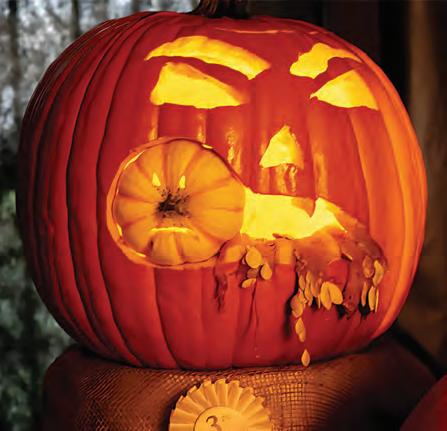
Haunted Hollow Halloween
Dale Hollow Lake State Park, Burkesville, through Oct. 11, 270.433.7431
Stephen King’s Misery
Barn Lot Theater, Edmonton, through Oct. 18, 270.432.2276
Trigg County Country Ham Festival
downtown Cadiz, though Oct. 11, 270.522.8244
Waveland After Dark
Waveland State Historic Site, Lexington, 859.272.3611
Eli Young Band With Colt Ford Amp at Log Still, Gethsemane, 502.917.0710
Fall Art Market
Kentucky Guild of Artists and Craftsmen, Kentucky Artisan Center, Berea, 859.986.3192
Tower Park, Fort Thomas, through Oct. 24, 859.572.1209
The Addams Family Musical
Gateway Regional Arts Center, Mount Sterling, through Oct. 26, 859.498.6264 26 27 28 29
Revisiting Creedence
Lexington Opera House, 859.233.3535
Disney’s Hocus Pocus In Concert
Kentucky Center for the Arts, Louisville, through Oct. 30, 502.584.7777 Fort Thomas Pumpkin Walk
Bluegrass Food Truck Festival
Hopkins County Fairgrounds, Madisonville, 270.452.1269 Halloween
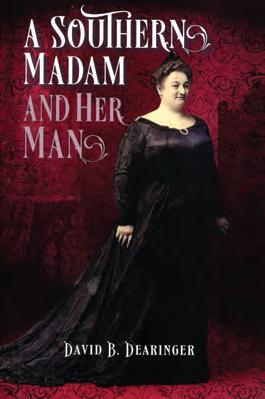


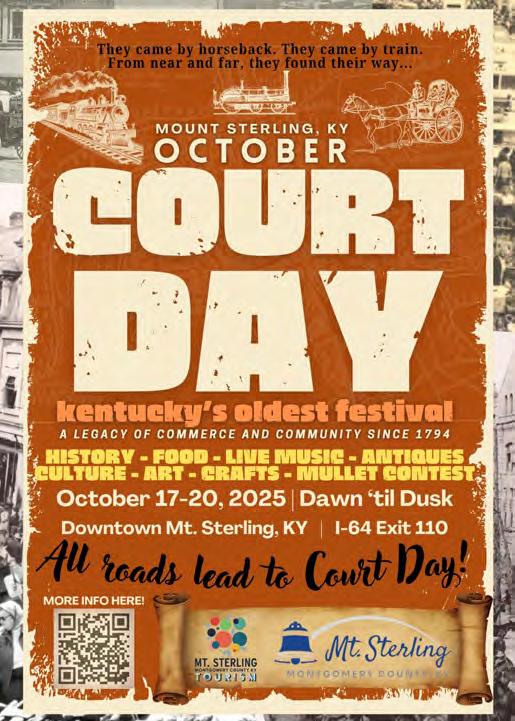
When the first episode of The Wonder Years aired in 1988, I was working at a daily newspaper in Shelbytucky, Indiana. I felt like I was watching a stylized version of my life. Kevin Arnold (played by Fred Savage) wore my clothes, lived in my room— in my neighborhood—had my friends and was smitten with Winnie Cooper (Danica McKellar), who lived across the street.

“It was truly amazing seeing the job Danica and Trevor did bringing Annie and Jake to life,” Correll said. “I couldn’t ask for more.”
So, when I was invited to the Lancaster Grand Theatre to see the screen debut of Grounded in Love, based on the novel by Stanford’s Angela Correll, I circled the date on my calendar. Why? Because I enjoy Angela’s books, and, well, the film stars Winnie—I mean Danica—and I owed it to her to be there.
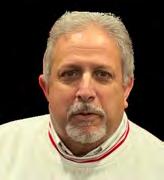
Grounded in Love is the story of Annie, a flight attendant who returns home to Kentucky to visit her grandmother, Beulah (Brenda Currin), and is reunited with Jake (Trevor Donovan), her childhood best friend, who also has recently returned home. The 1-hour, 23-minute faith-based film tells us: “God’s communication with us is through coincidences, or ‘God winks’.”
Grounded in Love is about regret, redemption and rebirth. It features several Stanford sites, Lincoln County landscapes and extras from across Central Kentucky, including Danville Tourism Director Kendall Clinton and his wife, Shannon
Grounded in Love is relatable. It asks viewers to consider the meaning in everyday coincidences.
So, back to The Wonder Years. In 1988, I worked in the same newsroom with Jackie Sheckler Finch, who had once worked with Neal Marlens and Carol Black, the writers who created the series. Jackie offered to send Marlens and Black one of my stories, set in a middle-school lunchroom and featuring a squirt-gun prank initiated by a fellow eighth-grader, now the city manager of one of Kentucky’s largest suburban communities.
When I told Angela that I’d like to meet Danica, she quipped, “Yeah, like every other man.”
“No, no,” I explained. But yes, most every man my age sees himself as Kevin and relates to the stories and relationships on a personal level. It should come as no surprise that when I met Winnie—I mean, Danica—I had an overwhelming need to introduce myself as Kevin.
“Really?” Danica said. “Kevin?”
“No, my name is Steve. I’m here to review the movie for Kentucky Monthly.”
I overheard one of her friends whisper, “That Kevin bit must get old, right?”
Danica didn’t roll her eyes or look annoyed but, never breaking our eye contact, she said, “I’ve been told The Wonder Years got it right—growing up in the 1960s and all.”
“Yes, you captured it flawlessly. It was like watching our memories. Like most viewers, I’d guess, I felt like it was my story, down to the last detail. In middle school, my crush was on a girl named Wendy who looked identical to Winnie. But I know you’re not Wendy or Winnie. You’re …”
“Annie?” she said. “Now you’re going to see me as Annie?”
“No, I know you’re not Annie, either, although you played the role quite well. I know you’re actually Danica, a noted mathematician and actor, who has appeared in a dozen Hallmark movies, The West Wing, How I Met Your Mother and another of my favorites, The Big Bang Theory.”
A line was forming behind me. I apologized for taking so much of her time. As I reached the theater exit onto Lexington Road, a truck roared past, and Danica yelled, “Hey!”
When I turned and looked back across the room, she tilted her head slightly and, at least in my postmiddle-aged imagination, almost winked. “It was nice to meet you, Kevin,” she said. “You’ll always be Kevin to me.”
Viewers can find Angela Correll’s Grounded in Love by going to greatamericanfamily.com/movie/ grounded-in-love/ or by streaming on Pure Flix.
Vest can be contacted at steve@kentuckymonthly.com


